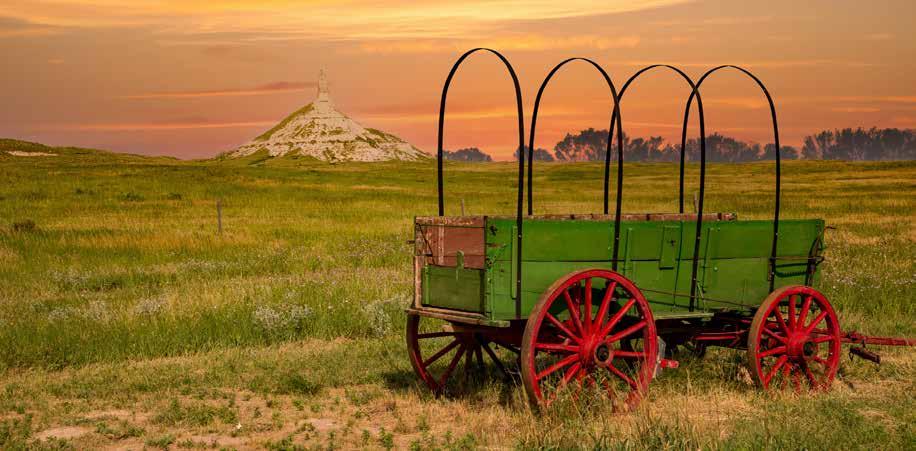




Name: Kathy
Business: A Act of Love Adoptions
Legal need: General counsel
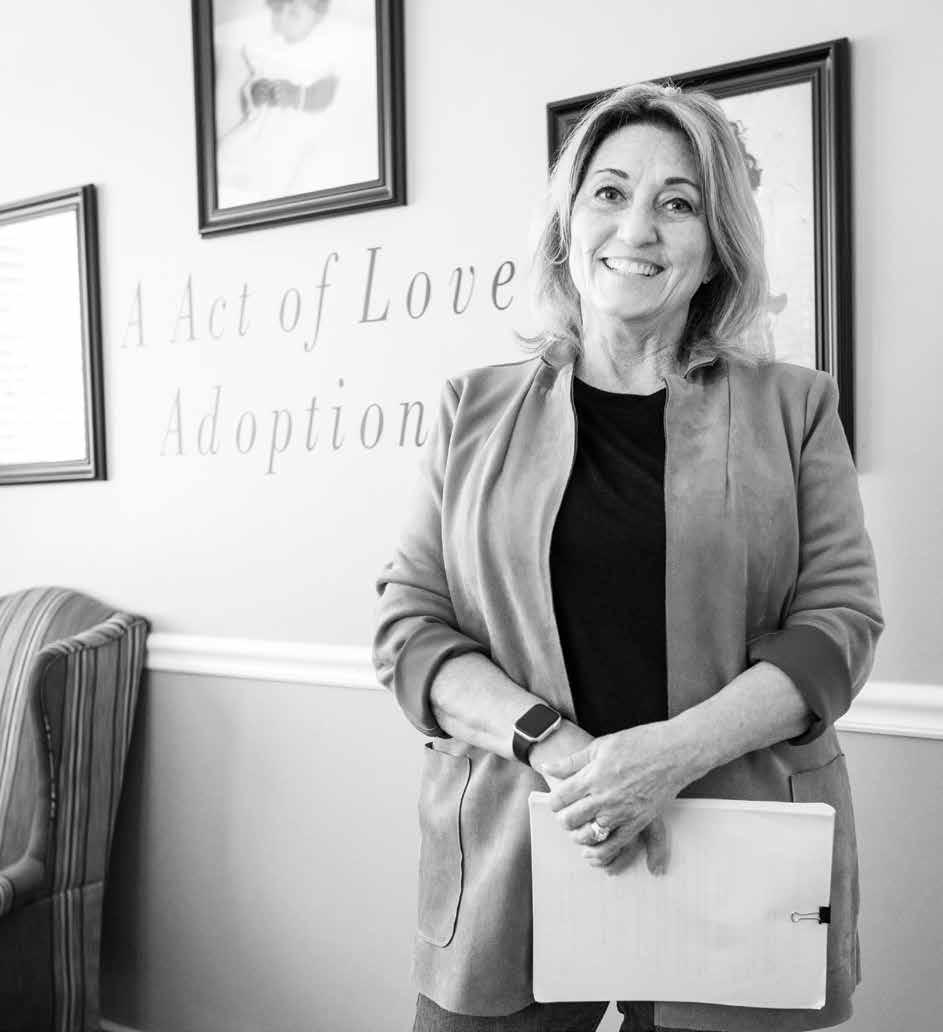
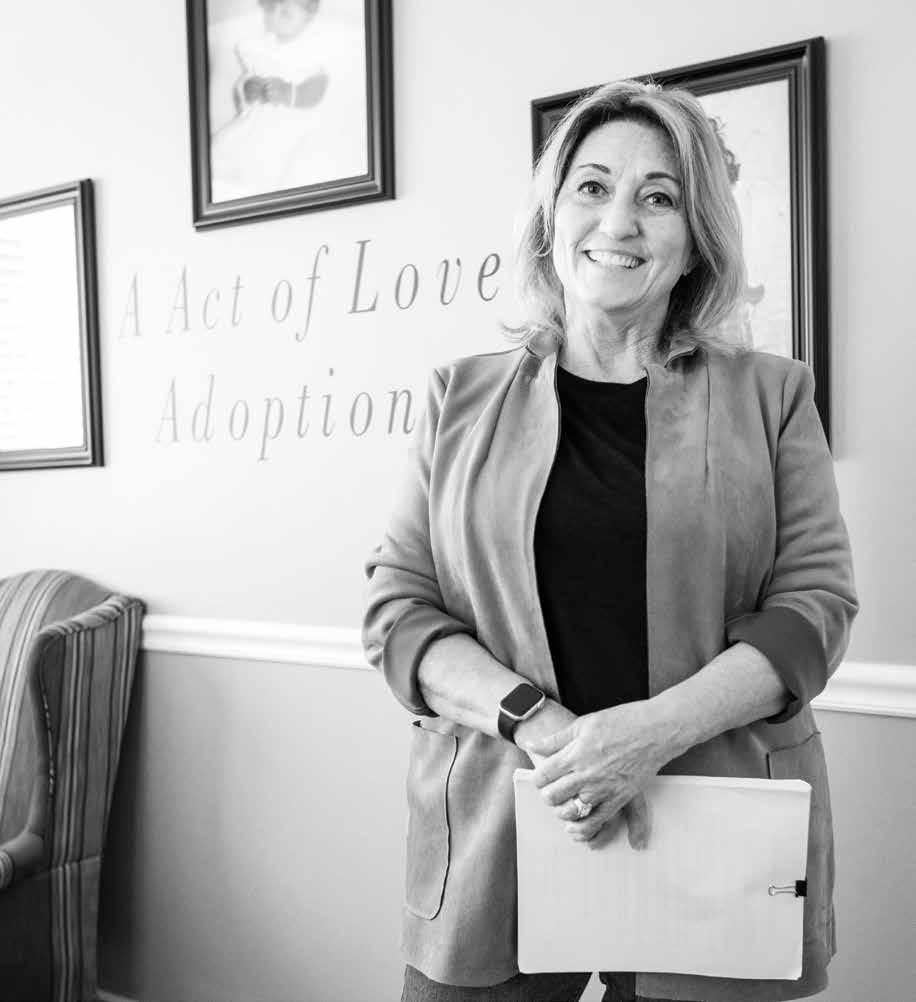
Kathy started A Act of Love Adoptions to help birth parents find loving homes for their babies. Such an important mission requires expert legal advice from a trusted partner. Kirton McConkie provides Kathy general counsel services that help ensure her business runs smoothly so she can continue bringing families together for years to come.
KEEPING
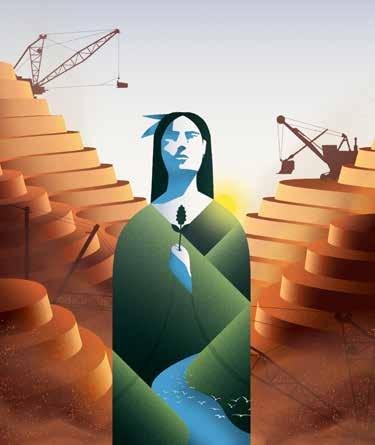
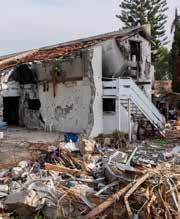

ON THE COVER: THE
BY BEAU MACDONNELLKIBBUTZ BE’ERI HELPED BIRTH MODERN ISRAEL.
THEN CAME OCTOBER 7.
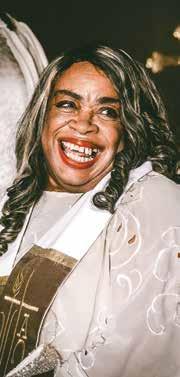
“The bigger fight here is if my religion is at stake, so is everybody else’s.”
A PLACE OF REFUGE
SPIRITUAL
ARE HEALING ONE OF AMERICA’S
by lauren steele

In the mind of a child with autism, conversation can be overwhelming. But at Brigham Young University, students use an animated social skills coach to help kids, like Scout, find their strengths and have meaningful interactions that build their confidence.
Learning by study, by faith, and by experience, we strive to be among the exceptional universities in the world and an essential university for the world.
BYU.EDU/FORTHEWORLD
“These aspects of human nature are evidence for the existence of a God, not against it.”

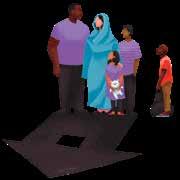
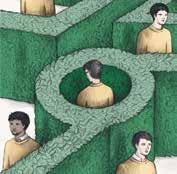
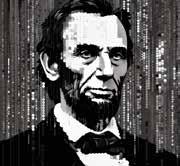



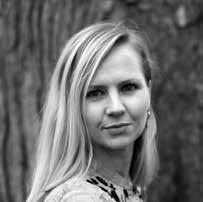
Brazile is a veteran political strategist and a former chair of the Democratic National Committee. She is chair of the William J. Fulbright Foreign Scholarship Award and an adjunct professor at Georgetown University. A New York Times bestselling author and an award-winning media contributor, her commentary on working with political opponents is on page 15.
Stephens is a Pulitzer Prizewinning columnist with The New York Times and editor-in-chief of the journal Sapir. He previously worked for The Wall Street Journal and is a past editor-in-chief of The Jerusalem Post. The author of “America in Retreat,” his essay on President Abraham Lincoln’s lost lecture is on page 66.
Manzhos is a national writer for Deseret News, focusing on profiles and stories about culture and faith. A native of Kyiv, Ukraine, her work has appeared in The Atlantic, The New York Times, The Washington Post and Slate, among others. Manzhos’ profile of the influential law firm Becket Fund for Religious Liberty is on page 50.
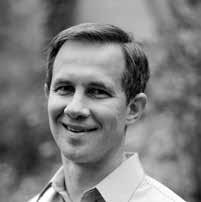


Wilkinson is an associate professor of psychiatry at Yale University. He has been published in The New York Times, The Washington Post and The Wall Street Journal. His essay adapted from his new book “Purpose: What Evolution and Human Nature Imply about the Meaning of Our Existence” is on page 58.
LimÓn is an illustrator based in São Paulo, Brazil. His work has appeared in Sojourners Magazine, Mckinsey & Co., Taco Mafia among other clients in publishing, branding and product packaging. His illustrations appear on page 16.
Mori is an Italian illustrator and animation director. She studied at the State Art Institute in Urbino. She was recently recognized in the prestigious publication Communication Arts for past work for Deseret Magazine. Her new work can be seen on page 21.

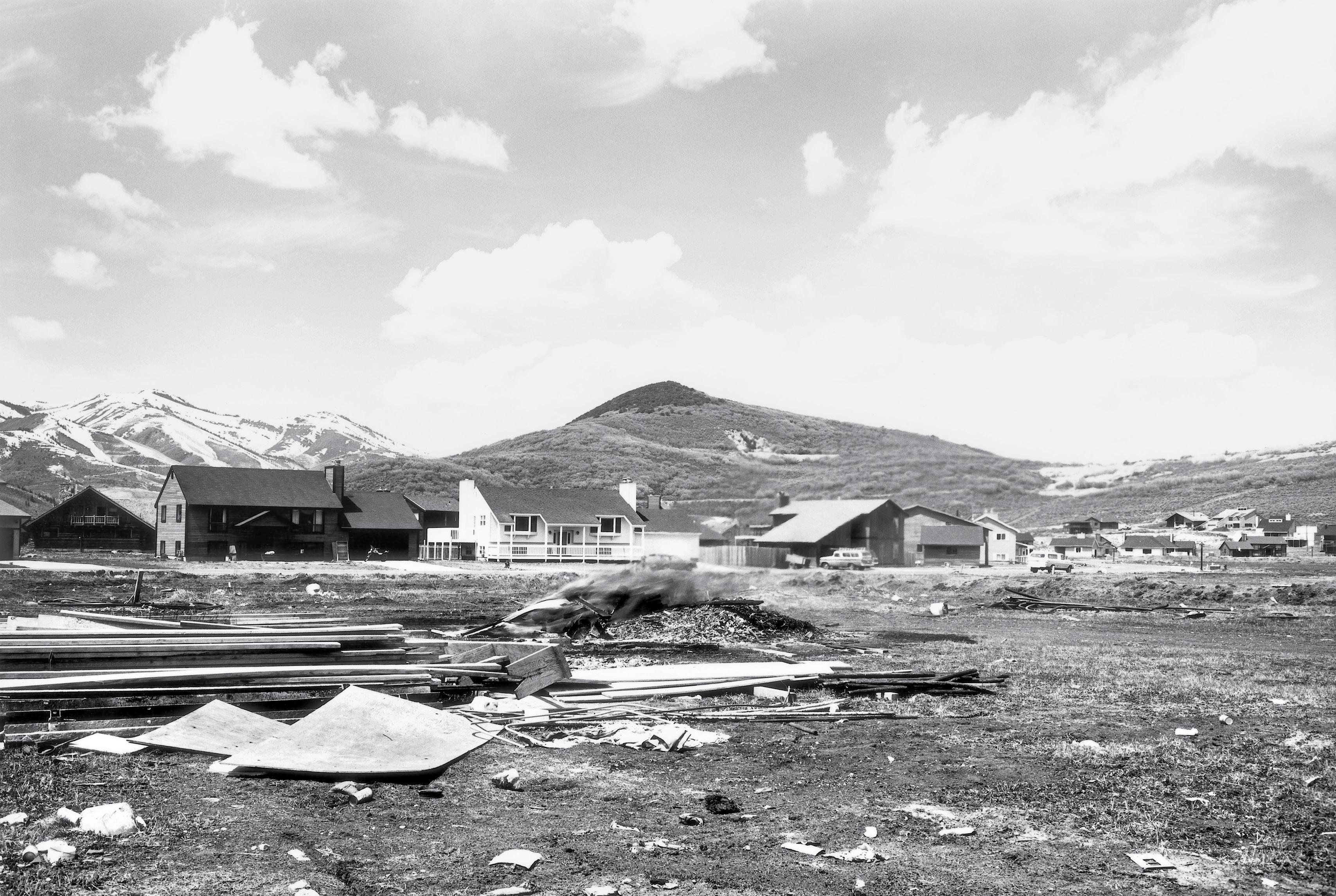
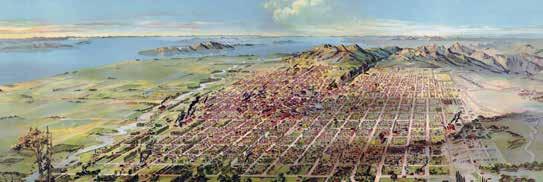
Iwas in Israel, wandering the Jaffa area of Tel Aviv, when my brother called. The evening before, an air raid siren had pierced the air, but tonight things were calm: couples pushing strollers, a guy with a ponytail at a sidewalk café strumming a guitar. Off in the distance, I could hear the sounds of a soccer game at Bloomfield. No fans were allowed inside as a safety precaution. After all, the country was at war, even if it didn’t feel like it. My brother wanted to know what I had learned.
I was there to report on the events of October 7, 2023, the largest single-day massacre of Jews since the Holocaust. In retaliation, the Israeli military was now methodically moving across Gaza, flattening entire neighborhoods. I struggled for a succinct answer. Back home, the conflict had seemed so distilled it was almost simple. One could see it as a battle over land or an age-old conflict between adherents of two of the world’s major religions. But on the ground, where people who had lived through rocket attacks still knew Palestinians as their neighbors, the reality was far more complex.
Hopefully, some of that nuance shows through in my dispatch from Israel (p. 40). I believe it’s important for journalists like me to face life and the issues we cover in all their complexity. Here at Deseret Magazine, we try to contribute to that by filling gaps in mainstream media coverage, whether that means elevating the region we call home or exploring the role faith plays in the world. Which is why each April we dedicate an issue to the topic of faith, and how it animates the lives of believers today.
In addition to my story, this year’s faith issue includes an in-depth profile of a small D.C. law firm that is reshaping how Americans think about religious liberty (p. 50). As contributing writer Mariya Manzhos explains, Becket has been defending religious freedom for Catholics, Evangelicals, Muslims, Sikhs, Jews
and Native Americans for 30 years — all pro bono — and has a string of significant Supreme Court wins to show for it. Religious liberty is sometimes criticized as a smokescreen for Christian conservatives to preserve discriminatory practices, but Mariya traveled to Globe, Arizona, to look into an ongoing case, in which Becket is defending the right of an Apache tribe to protect sacred land from a massive mining project.
I’m also proud of A Place of Refuge, a photo essay from Oakland, California, a troubled city on the western fringe of our region. Featuring the work of Nicoló Sertorio and J Michael Tucker, these images show how faith leaders across denominations are dedicating their ministry to lifting up a once mighty city now blighted by crime and poverty (p. 28).
Rounding out the issue are two essays I hope you’ll read, starting with Yale professor Samuel Wilkinson’s reconciliation of the tension between his belief in God and his work studying the theory of evolution (p. 58). Also, Stephen Courtright and Paul Lambert argue that religious groups may offer the answer to one of the most charged issues of our day: diversity and inclusion efforts (p. 62).
Months after returning from Israel, I still think of my brother’s question that night in Tel Aviv. I had seen the Western Wall and the Dome of the Rock. I had visited the Garden of Gethsemane and the Mount of Olives. But what had struck me most was something I saw in Tel Aviv: Jews eating in cafes owned by Muslims, synagogues and mosques on the same street. We all hold different beliefs, but when we relate to each other as humans, those differences don’t have to be a reason for conflict. We have so much more in common than we realize. In Tel Aviv, I found a city where people of different beliefs are neighbors, not enemies. Maybe there’s a lesson in that for us all.
—JESSE HYDEEXECUTIVE EDITOR
HAL BOYD EDITOR JESSE HYDE
CREATIVE DIRECTOR
ERIC GILLETT
MANAGING EDITOR
MATTHEW BROWN
DEPUTY EDITOR CHAD NIELSEN
CONTRIBUTING EDITORS
JAMES R. GARDNER, LAUREN STEELE
POLITICS EDITOR
SUZANNE BATES
EDITOR-AT-LARGE DOUG WILKS
STAFF WRITERS
ETHAN BAUER, NATALIA GALICZA
WRITER-AT-LARGE
MICHAEL J. MOONEY
CONTRIBUTING WRITERS
SAMUEL BENSON, LOIS M. COLLINS, KELSEY DALLAS, JENNIFER GRAHAM, MARIYA MANZHOS, MEG WALTER
ART DIRECTORS
IAN SULLIVAN, BRENNA VATERLAUS
COPY EDITORS
SARAH HARRIS, VALERIE JONES, CHRIS MILLER, HANNAH MURDOCK, TYLER NELSON
DESERET NEWS PUBLISHING CO.
PUBLISHER BURKE OLSEN
CHIEF FINANCIAL OFFICER
ERIC TEEL
VICE PRESIDENT MARKETING
DANIEL FRANCISCO
SENIOR VICE PRESIDENT SALES
TRENT EYRE
VICE PRESIDENT SALES SALLY STEED
PRODUCTION MANAGER
MEGAN DONIO
OPERATIONS MANAGER
BRITTANY M C CREADY
DIRECTOR OF CIRCULATION
SYLVIA HANSEN
SPANNED FROM THE SIERRAS IN CALIFORNIA TO THE ROCKIES IN COLORADO, AND FROM THE BORDER OF MEXICO NORTH TO OREGON, IDAHO AND WYOMING. INFORMED BY OUR HERITAGE AND VALUES, DESERET MAGAZINE COVERS THE PEOPLE AND CULTURE OF THAT TERRITORY AND ITS INTERSECTION WITH THE BROADER WORLD.



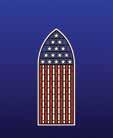

DESERET MAGAZINE , along with the Wheatley Institute and the Wesley Theological Seminary, sponsored a forum at the National Cathedral in Washington, D.C., built around the January/February issue and its theme, “How to Disagree Better.” The event featured several contributors to the issue, including Utah Gov. Spencer Cox ; Thomas Griffith , former judge on the U.S. Court of Appeals for the District of Columbia Circuit; and Timothy Shriver , the head of Special Olympics and co-founder of UNITE , an initiative to promote national unity. The 12 essays by leading commentators and scholars in the issue’s cover package generated responses from a broad spectrum of readers. A book excerpt by New York Times columnist and podcaster Ezra Klein on why Americans are polarized (“Depolarizing Ourselves”) resonated with self-described conservative reader Kerry Soelberg . “I especially agree that if we desire to Make America Great Again, we need to be clear-minded about what point in the past America was greater than it is now and why. With specifics. Without specifics, MAGA is a way to drag America back to days that we do not want to return to and to deny the significant blemishes we still have.” And David Hilton had this hope after reading historian Hyrum Lewis’ exploration into the origins of the “Left” and “Right” political labels, which have defined American politics for a half-century (“The Myth of Left and Right”): “Particularly insightful article. I wish all citizens had ears to hear it.” But Daniel Bolz , founder of Freedom Alliance LLC , wrote that all of the essays missed the mark in explaining how America got to its current state of disunion. He said that today’s divisiveness stems from an ongoing campaign since the 1960s “to infiltrate our constitutional republic and replace it with democratic socialism.” The solution to the nation’s discord, Bolz said, is an education system that teaches “the true historical facts about the origins of America’s founding.”
On the topic of the Israel-Hamas war, Megan Feldman Bettencourt revealed how hearing from Jewish and Palestinian mothers can change one’s perspective on the decades-old conflict (“A Mother’s Grief”). “The author is probably right when she describes what needs to happen to stop the killing, but is certainly wrong in thinking such a utopia can actually happen in our corrupt and evil world. It will take a millennium, as is believed by millions to occur in the future, for such a peaceful outcome to happen. It can’t come too soon!” wrote Charles Engar . Ethan Bauer laid out the debate over capitalism and whether there is a better economic system (“Is the End of Capitalism Upon Us?”). Robert Michaelson argued, “For capitalism to function at its best, all ideas must be free to be shared and voted upon by how and where people choose to spend their money or vote on policies. Those who censor and interfere with it cause the very problems they blame on capitalism.”
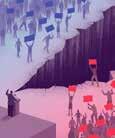
“If we desire to Make America
Great Again, we need to be clear minded about what point in the past America was greater than it is now and why.”

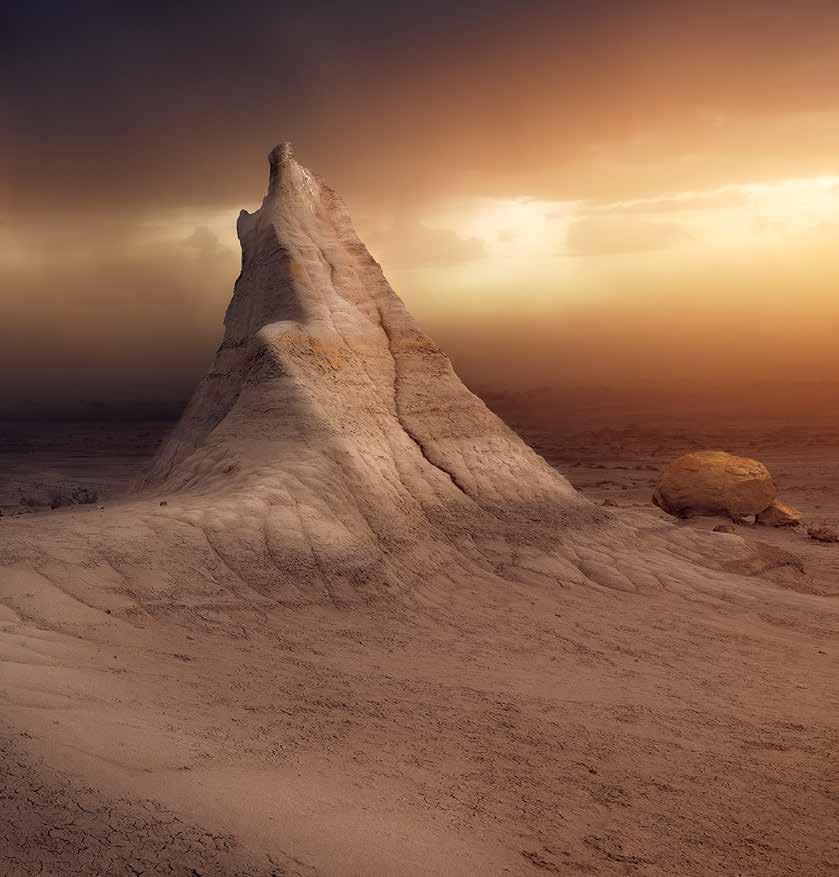

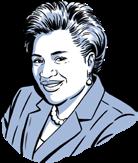
When I was coming up in politics, I made some mistakes. I used to think that because I was an athlete, I had to beat my opponent. And as I’ve gotten older, I decided I need to not just beat my opponent, but learn from my opponent.
I’m so glad I learned that lesson, because throughout my life I have fought great battles for civil rights and equal justice under the law. In trying to make Martin Luther King Jr.’s birthday a national holiday, we needed Ronald Reagan. Working with John Lewis and others to extend the Civil Rights Act of 1964 or the Voting Rights Act of 1965, we needed George Herbert Walker Bush and George Walker Bush.
And on that note, I’ve got to tell you my greatest story of humility. It was the night that Hurricane Katrina made landfall on the Gulf Coast. And like many Louisianans and people from the Gulf, my family was dispersed. Those who could afford to leave had left. But it was the end of the month and when you’re working paycheck to paycheck, you’re waiting for that eagle to land — Social Security, VA benefits, whatever. And so a lot of people couldn’t leave.
I found myself in a position where I knew people in the Bush
administration. And rather than go on national TV and criticize the failure to rescue people or provide them with water, I went on national TV and said, “Mr. President, how can I help you?” For over three years I sat in the Bush White House more than I ever had in Bill Clinton’s White House. And I realized that God had put me at that table for such a time. For me, it was a time to tell people and remind them that I was one of those poor kids who grew up on the bayou, that I was born at Charity Hospital that was no longer there.
Sitting across the table from the president of the United States, I could ask him to give us another hospital, so that poor kids like me would have a place to come into this world. I was a kid who could go to President Bush and say, “We need to fix the levees and rebuild the schools and bring people back home.”
On the 10th anniversary of Hurricane Katrina, I flew down to Louisiana on Air Force One with President Barack Obama. When he asked me to come with him, I said, “I’m going to start the morning off with you in the Ninth Ward in downtown. And then I’m going to welcome the president and Mrs. Bush to my hometown.” And they both came with me. Nobody booed. We played music. The president did his best dance. And I look forward, if God allows me, to the 20th anniversary of Hurricane Katrina next year to bring both my presidents back home because we’ve made a lot of progress.
As divisive as things are today, we must remember that Democrats and Republicans are minority parties. Neither one of us represents the majority. The majority of voters are unaffiliated. They don’t want anything to do with Republicans or Democrats. The problem is the system that we have in place does not allow them to actually make choices until the general election in most states. So we’ve got to find ways to get the unaffiliated voters back. We’ve got to make sure that they’re able to help us make big decisions with regard to the primaries, or to change the system. I think the other critical shortage we have is we need more candidates. We need more people willing to step up and run for office. I tell my students: “Why you? Because there’s no one better. Why now? Because tomorrow is not soon enough.”
When I was a child, my parents were always working late, a second job or the third job, and my grandmother would call us together by name and read us something from the Bible. When I think of her, and think of our current political moment, I think of the book of Galatians, Chapter 6, Verse 9: Do not grow weary in doing good, for in due season you will reap a harvest, if you don’t give up. I am never going to give up on America. I am never going to give up on community. I’m never going to give up on our ability to transform and to make progress.
So America, don’t give up. Our best days are ahead.
DONNA BRAZILE IS A POLITICAL STRATEGIST AND FORMER CHAIR OF THE
ADAPTED FROM AN EVENING FORUM AT THE WASHINGTON NATIONAL CATHEDRAL SPONSORED BY DESERET MAGAZINE, THE WHEATLEY INSTITUTE AT BRIGHAM YOUNG UNIVERSITY AND THE WESLEY THEOLOGICAL SEMINARY.
MORE PEOPLE ARE being forced from their homes today than ever before. Those who flee their countries become refugees, joining a global diaspora so vast it is difficult to comprehend their numbers. The phenomenon is as old as the idea of a country, from Babylon’s conquest of ancient Israel to Spain’s expulsion of Muslims and the ongoing implosion of Venezuela’s economy. But today’s global crisis is unprecedented in scope and impact, presenting new challenges for political leaders, humanitarian organizations and people of faith. How did we get to this point? Who is leaving which countries, and why? And who is taking them in?
MEGAN FELDMAN BETTENCOURT114
MILLION PEOPLEThat’s how many have been forced from their homes by violence, persecution or natural disasters — roughly 1 in every 73 humans, including 5.6 million in 2023 alone. If they formed a country, it would be 14th in population, behind Japan and the Philippines but far ahead of Turkey and Germany. More than half come from Syria, Afghanistan and Ukraine. Most remain in their home countries. Another 21.5 million have been displaced annually by natural disasters since 2008.

Japan Philippines Displaced people Turkey Germany COUNTRY POPULATIONS:
123M 117M 114M 86M 83M
The number of refugees — those who have crossed an international border — has nearly tripled since 2009, increasing by 293 percent. According to the United Nations High Commission on Refugees, they number 30.5 million, stuck between the countries that forced them out and those reluctant to give them a home. That’s enough to match the population of Texas.
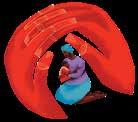
This international law now binds 146 signatory nations that must protect refugees and give asylum when merited. Crafted after millions were displaced by two world wars — including Jews fleeing the Holocaust who were turned back to sea from literal safe harbors — the convention dictates that refugees cannot be returned to a country where they face serious threats against their lives. The 1967 Protocol eliminated geographic and time limits to protect all refugees.

Four out of five refugees are hosted by countries that collectively net less than a fifth of the world’s income, mostly developing nations located near the source countries. Turkey and Iran top the list with 3.6 million and 3.4 million, respectively, followed by Colombia, Germany and Pakistan. The United States hosts 389,300 refugees.

3 WARS
These recent conflicts have displaced almost 2 million people. Syria’s civil war, which started in 2011, launched an exodus of at least 6.5 million; 6.8 million more remain displaced within that country. Another 11.6 million fled Ukraine after Russia’s invasion in 2022. And 1.9 million Palestinians have been pushed out of their homes in the Gaza Strip by Israel’s military response to Hamas’ attack on Israel last October.
INDIVIDUALS DISPLACED BY RECENT WARS:
6.5M Syrians
11.6M Ukrainians
1.9M Palestinians
That’s the population of Kutupalong, the world’s largest refugee camp — about the same size as Indianapolis — a slum of bamboo huts packed onto five square miles of former woodland in Bangladesh. Most are Rohingya Muslims who fled neighboring Myanmar in 2017, escaping an ethnic cleansing campaign against their religious and ethnic minority. Like the 6.6 million who shelter in similar camps around the world, they deal with hunger, crime, language barriers, unemployment, outbreaks of illness and limited access to medical care.
That’s the average number of people displaced by natural disasters such as earthquakes, floods, droughts and famines since 2008, according to the United Nations. The devastating impact is often amplified by rapid urbanization and population growth in hazard-prone areas, now multiplied by the increasing pace and severity of weather-related events.
More than half of all refugees are minors. Child refugees are at high risk for mental health issues including post-traumatic stress disorder, anxiety, depression, and other emotional and behavioral issues which can cause disturbed sleep, inattention and social withdrawals, according to the Denver Journal of International Law & Policy.

ILLUSTRATION
BY THIAGO LIMÓN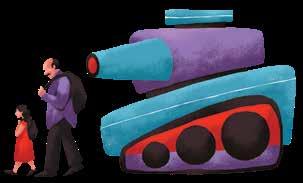
“WE WANTED TO REBUILD OUR LIVES, THAT WAS ALL. … WE LOST OUR HOME, WHICH MEANS THE FAMILIARITY OF DAILY LIFE. WE LOST OUR OCCUPATION, WHICH MEANS THE CONFIDENCE THAT WE ARE OF SOME USE IN THIS WORLD. WE LOST OUR LANGUAGE, WHICH MEANS THE NATURALNESS OF REACTIONS, THE SIMPLICITY OF GESTURES, THE UNAFFECTED EXPRESSION OF FEELINGS.”
HANNAH ARENDT, HISTORIAN, PHILOSOPHER, POLITICAL THEORIST AND REFUGEE FROM HITLER’S GERMANY

EVERY YEAR, MILLIONS TRAVEL abroad seeking health care they can afford. “Medical tourism” is an estimated $92 billion industry that is growing by 15-25 percent each year, promising cheaper access to dental implants, plastic surgery, fertility assistance and even exotic cancer treatments — and doubles as something like a vacation to countries like Thailand or Mexico. The practice has become common around the world, but it’s particularly cost-effective here; the average American pays more than $12,500 on health care each year, outpacing the citizens of any other wealthy nation by $4,000. Some insurance companies have embraced the practice, too, but the savings come along with new risks and potential complications. Is medical tourism a boon for the marketplace, or a symptom of something rotten?
ETHAN BAUERACCESS TO DOCTORS and clinics abroad empowers Americans to make the best choices for their own health by introducing competition to a stagnant system, dramatically expanding a growing range of options. Consumers can save up to 80 percent of what they’d pay at home, according to Patients Beyond Borders, a North Carolina company that promotes the practice. For many, these savings constitute a lifeline.
“Our market has always been what I call the ‘working poor’ and they just keep getting poorer,” Josef Woodman, the company’s CEO, told The New York Times in 2021. “The pandemic has gutted low-income and middle-class people around the world, and for many of them the reality is that they have to travel to access affordable health care.” The differences in cost are most salient for elective procedures, like plastic surgery, fertility treatment and dental work, which are not usually covered by insurance.
Institutions and corporations can also benefit from even a quick jaunt into a neighboring country. In Utah, the public trust that insures state employees offers a “pharmacy tourism program,” flying clients to San Diego and shuttling them across the border to buy low-cost prescription drugs in Tijuana, Mexico. Or if they prefer, they can choose to travel to Vancouver, Canada. In 2021, researchers at the University of Chicago argued that even medical tourism to other markets within the United States could be the most cost-effective way to fill the gap left by vanishing rural hospitals. Less glamorous, perhaps, but utilitarian.
Some patients travel for personal reasons, like getting access to cutting-edge treatments or privacy for elective procedures like cosmetic surgery. “Many can return home from their ‘vacation’ without anyone knowing they had a procedure at all,” writes one registered nurse for the physician-reviewed health website Verywell Health. Others may travel for treatments that aren’t approved or allowed in the U.S., like stem cell therapy or other experimental procedures.
Despite the inevitable hand-wringing over quality of care, the independent nonprofit The Joint Commission has recognized over 1,000 medical facilities worldwide that meet its standards. The same organization has accredited American hospitals since 1951 and is the largest health care accreditor in the nation, so its approval carries weight.
MEDICAL TOURISM IS an indictment of our nation’s health care system, masked in pleasant terminology. “I prefer the term ‘outward medical travel,’” writes MSNBC health columnist Dr. Esther Choo, “and would argue that (this industry) should remind us of how inaccessible health care is here and the lengths to which people will go to get the care they want or need.” Patients may not realize what they’re risking, whether at their own initiative or nudged by insurance providers. “Quality and safety standards, licensure, credentialing and clinical criteria for receiving procedures are not consistent across countries and hospitals.”
These are not academic concerns, but vital issues with life-threatening consequences. One analysis from the Centers for Disease Control and Prevention found that 93 Americans died between 2009 and 2022 due to complications from botched cosmetic surgeries in the Dominican Republic alone. The federal agency has also found outbreaks of antibiotic-resistant bacteria that were linked to medical tourism in Mexico and warns that the most common complications among medical tourists are infections.
Medical tourists seeking access to treatments that have not been tested and approved by regulatory agencies in the U.S. may not be aware of the risks they are taking with a practice that researchers at Canada’s Simon Fraser University call “circumvention tourism.” They warn of potentially enormous pitfalls, from shattered hopes to money-sucking quackery. “Individuals may be desperate for a cure and vulnerable to engaging in decision-making that’s predicated on hope,” they write, “without a full understanding of the likelihood of success.”
Perhaps the most common problems are the most obvious: Patients are traveling far from home to get treatment from doctors who cannot participate in long-term follow-up, often coming up against linguistic and cultural challenges. Much more prevalent than the risk of getting targeted by opportunistic criminals are these impediments to communicate their needs. “It might be a no-brainer,” observes Henry Ford Health, one of the largest health care companies in Michigan, “but if you don’t speak the local language, it might be difficult to explain any feelings of discomfort or apprehension as they come up.”
Long friendships have a way of shifting the space-time continuum. Once a close friendship has transcended years, decades — enough fashion cycles to see flannel and baggy jeans come back into style — that friendship can defy the traditional laws of physics. Sometimes it takes effort to untangle the order of past events, for example. This wedding, that funeral, some epic road trip: With a collective recollection, time can move in any direction and each recalled moment can occur differently with every new telling. A good friendship is a multiverse.
Time spent apart can also elasticize. In college, a friend’s summer abroad can feel like an eternity. But by the time you’re in your early 40s, you might not even remember the last time you saw each other.
That’s the particular quantum anomaly my friend Shaun and I were experiencing a few weeks ago on the phone. It had been too long since we’d gotten together for dinner, we agreed.
“A couple months at least,” one of us muttered.
Then we were both quiet for a second as we thought about the last time we’d actually hung out. My brain rolled back through the calendar. It wasn’t in winter or fall. Over the
BECAUSE WE THINK OF FRIENDS AS THE PEOPLE WHO PROVIDE RESPITE FROM THE OBLIGATIONS OF LIFE, BUT MAINTAINING FRIENDSHIPS CAN TAKE WORK.
summer, right? No, it was before then, too.
Shaun is my oldest friend. We met in middle school while competing in, of all things, a geography bee. As the other contestants melted away faster than the
Thwaites Glacier — just east of Mount Murphy, on the Walgreen Coast of Antarctica — we were among the four or five kids who answered correctly enough to become finalists. He eventually won. We were roommates in college. We were in each other’s weddings. We’ve been there for each other through a variety of traumas and triumphs, and we’ve stayed friends as we both built families and careers. He’s earnest to the point of quirkiness, and one of the most loyal people I know.
These days Shaun lives about 45 minutes away. We text each other a few times a week and chat on the phone every now and then. But as we thought back, we realized that it had somehow been more than a year since we’d seen each other in person.
I was stunned. Then I was disappointed in myself. How could it have been so long?
The truth is, we both travel for work. We’re both trying to be good husbands and fathers, and that takes a lot of time, too. We also each have our own separate interests and circles of colleagues and friends. A few
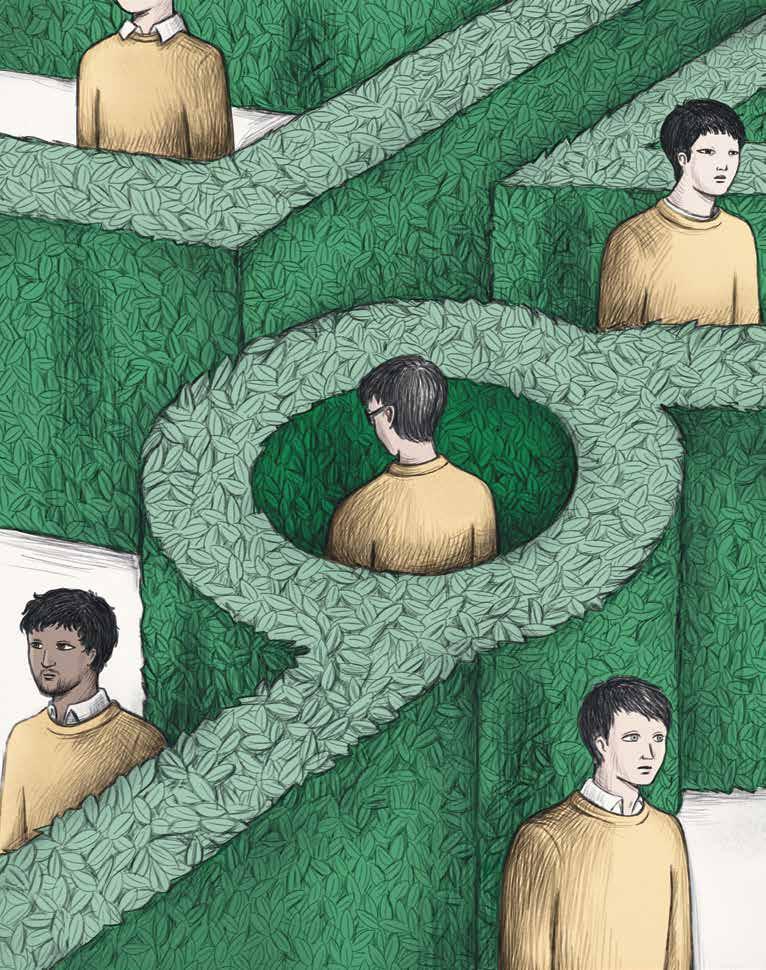
SOCIETY’S MESSAGE TO MEN IS GENERALLY SOMETHING ALONG THE LINES OF “SUCK IT UP.”
times we made plans for lunch or dinner, but then someone was out of town, or a kid was sick, or the weather was bad and it seemed easier to just do it a different day.
It sounds counterintuitive because we think of friends as the people who provide respite from the obligations of life, but maintaining friendships can take work. It’s something a lot of adults — especially men — struggle with.
Several studies over the last few years have shown that men are experiencing what’s become known as a “friendship recession.” It’s essentially an epidemic of loneliness. Surveys show that men in general have fewer close friends than women, and men today have fewer close friends than men 30 years ago. Since the early 1990s, the percentage of men who say they don’t have any close friends has multiplied several times over. Men are less likely than women to reach out to friends to talk about their personal feelings, too. Not coincidentally, men are also nearly four times as likely as women to die by suicide, according to data from the Centers for Disease Control and Prevention. These trends started before Covid-19, but a global pandemic sure didn’t help.
I couldn’t help but wonder: Why is it so difficult for men to make and maintain friendships? What’s driving this loneliness?
IT MIGHT BE easy to dismiss any fret over the loneliness of men. After all, our society was built mostly by and ostensibly for men. And it’s still mostly men in control. Men are also, statistically, responsible for much more violence and much more likely to be the oppressor than the oppressed. Men, as a group, are not always the most sympathetic characters.
Still, this is a topic that should concern everyone.
At its worst, male loneliness can result in mass devastation. Think mass shooters, serial killers, barely visible tinderboxes vulnerable to the most dangerous types of terroristic influence. But even when it’s
nothing close to that bad, we’re still talking about millions of sad men — sons, brothers, fathers, husbands, neighbors — living out unfulfilling, lonesome existences. And then sometimes deciding not to live out that life after all.
To be clear, discussing the loneliness of men doesn’t invalidate the very real, stressful and often lonely experiences of women or marginalized groups. It’s certainly possible to be concerned about more than one problem at a time. Plus, the loneliness epidemic facing men is different — and not only because a wide swath of society doesn’t have much empathy for men.
Male loneliness isn’t a side effect of the way our society is structured. It’s a direct effect. Stoicism is a virtue in our culture. We often celebrate an exacting control of emotion. We might schedule our lives around watching two trained men get into a ring and try to knock each other out, but only a masochist would enjoy watching those same two men get into the same room and cry.
Look at the way literature and cinema has depicted traditionally successful men. There’s wealth and power and sometimes even the love of a family. But very few of them are surrounded by genuine friends, people they trust and depend on. The only exceptions: tales about war or team sports, or detective stories. Nearly every good detective has a colorful cadre of trusted associates that help solve the mystery. For the most part, though, our stories don’t have room for a lot of friends.
And yet, even happily married men need people outside their family to talk to, about both the banal and the painful. The need to trust and be trusted is inborn in our species. For proof, look no further than the copious number of American veterans who return from combat and report feeling a deep, abiding loneliness. They don’t necessarily miss the most terrible, traumatizing elements of war, but they do miss the camaraderie, the bonds forged through
those shared experiences. There’s a certain strength and confidence that comes from knowing others have your back, and that you have a purpose in protecting them.
The most obvious reason why most men might have such trouble with friendships is that whole discouraging vulnerability thing. Society’s message to men is generally something along the lines of “Suck it up.”
But that’s nothing new. Men have been encouraged to bury their emotions for much of modern history. If anything, our society is more open and less judgmental about the way we choose to live our lives than ever. And yet, male friendships have plummeted.
There have been a few big changes in our lives in the last 30 years, of course. The internet, and social media in particular, has completely transformed our social lives. It’s never been easier or faster to chat with someone, whether that’s via text or direct message. We’ve never been more connected to one another. But that ease of communication and the constant streams of potential distractions have led to even less of the earnest, rewarding interaction humans require. And the interconnectedness has undoubtedly made the world more polarized, more fractured. In a twisted irony, the more we’re able to connect, the lonelier we’ve become.
Add to that some of the socioeconomic developments of the last few decades. The economy is approaching Gilded Age levels. In a lot of cities, it’s harder than ever to buy a home. More men are living with their parents. More Americans say they feel a general sense of doom. None of these things are great for friendships.
But even if it’s especially pronounced here, America certainly isn’t the only country where men are lonely. One of the most extreme examples is Japan, where there is an entire class of mostly male social outcasts called hikikomori, which translates roughly as “extreme recluses.” They’re known to isolate in their homes for weeks — sometimes
months — at a time. Plenty are young, but the Japanese government estimates that there are more than 600,000 hikikomori between the ages of 40 and 64. Economists are concerned that the phenomenon is exacerbating an already dire demographic crisis.
In hopes of reintegrating some percentage of them back into society, a Japanese nonprofit has created long videos of live-action women, hoping to help hikikomori practice small human interactions like making eye contact.
IT’S NOT CLEAR from any of the current research what society writ large might need to do to stave off this friendship recession
SEVERAL STUDIES OVER THE LAST FEW YEARS HAVE SHOWN THAT MEN ARE EXPERIENCING WHAT’S BECOME KNOWN AS A “FRIENDSHIP RECESSION.” IT’S ESSENTIALLY AN EPIDEMIC OF LONELINESS.
— but being able to discuss this problem without anyone rolling their eyes certainly seems like a good start. If reasonable, rational thinkers don’t ever want to address the issue, the only people purporting to help lonely men will be the most toxic, destructive elements of society.
On a personal level, the answer is will and intentionality. Almost every study ever done on the subject indicates that people with more close friends tend to be happier and healthier. Humans are social creatures. Historically, we’ve solved our biggest problems with collaborations built on trust and reciprocity. Good friends can make the good times in life even better. In the bad
times, they can help ease the suffering. And the echoing silence of needing a friend and not having one can be devastating.
Like eating well and exercising, the best way to maintain close friendships is by making it a habit, a regular practice. Maybe that’s a monthly meal with the friends you’ve had since your haircut was deeply embarrassing. Maybe that’s a weekly pickleball game with a neighbor or one of the other dads from your kid’s school. Making friends can be intensely awkward. But so is going for a run if you haven’t done it in a while. Learning to trust and proving to others that they can trust you has to be a priority in life.
If it’s too uncomfortable, take a lesson from the fictional detectives who’ve cultivated those rosters of trusted cohorts. They always find some reason to visit their friends. They’re constantly proving that they’re there for one another. Even if you don’t have any capers to solve, deciding to see more of your friends is usually pretty great.
As for Shaun and me, the first thing we did was get together for dinner at a great barbecue joint between our respective hometowns. We also made a plan to do that more often, an intentional decision that we aren’t only going to see each other when life seems to be spiraling.
In a mesquite-scented wooden booth at the restaurant, we caught up on life. We talked about our families. We talked about work. We swapped a few new stories, and a few old stories, too. And we each mentioned some traveling we’d done — forever the same kids who met in that middle school geography bee.
We also experienced another violation of the laws of time and space. Sure, the clock has continued to tick since we’d last seen each other. It’s possible there’s a little less hair and maybe a little weight lost or gained. But it didn’t take long before we suddenly felt like absolutely no time had passed at all.
On a Sunday morning in 2006, Chad Connelly’s life began to unravel. As he tells it, he came home from a church service with his two sons in tow, ages nine and five. Upon entering the house, he found his wife of 18 years on the kitchen floor, lifeless. He sent his boys to their room and held her body. “I literally challenged God,” he recalls. “If all things work together for good to them that love God,” he prayed, “you’ve got to prove it.”
The following weeks were a blur. He fainted in the casket room. He hadn’t arranged for a headstone — “Nobody ever told me you had to go pick out a tombstone,” he recalls. He ached for his sons, who lost one parent to suicide and seemed to be losing another to distress. He agonized over his career as an engineer and a businessman. But he felt a nudge. “Sometimes in the lowest places, God says, ‘I’m not done with you,’” he says. “I believe he’s tapped us on the shoulder and said, ‘Now it’s your turn, go fix what’s going on in this nation.’”
Here in his story, Connelly says that he decided to follow the voice. Now, nearly two decades later, he works as one of the
most influential evangelical powerbrokers in American politics.
If Connelly had his way, every Christian in the country would vote. The country, as he sees it, is barreling toward a precipice: away from the Bible, away from conservative values, away from God. He believes that if he can train enough pastors to vote the “right way,” they can train their congre-
“I BELIEVE HE’S TAPPED US ON THE SHOULDER AND SAID, ‘NOW IT’S YOUR TURN, GO FIX WHAT’S GOING ON IN THIS NATION.’”
gants. “Political people walk into my meetings, and they see 42 pastors,” Connelly says. “I see 6,000 people, 8,000 people. They don’t know the multiplier effect.”
CONNELLY ISN’T A pastor. He’s not a big-money donor. Aside from a stint as the Republican Party chair in South Carolina, he’s never held
elected office. But within his nonprofit organization Faith Wins, Connelly has amassed a following of some 16,000 evangelical pastors, who look to him as a mentor as they navigate political issues. He speaks with an assuredness — a charm. And with conviction. To them, Connelly is the nonpartisan guide equipped to help them combine their faith with their politics. All he asks in return is they register their congregants to vote and teach them to vote “Biblical values.”
Faith Wins has pastors involved in all 50 states, though the highest concentrations are in early-voting states like Iowa, New Hampshire and South Carolina. Before the Iowa caucuses, Connelly blitzed the state with a group of pastors, hosting “caucus training” meetings in churches, where he guided congregants on where to vote, how to register and which values should drive their candidate choice. In New Hampshire, he held pastor briefings on issues like Israel and abortion. In South Carolina, he held closed-door meetings with Republican candidates themselves.
To Connelly, his work is an essential bridge between church and politics. But not

everyone sees it that way. Many Americans are uncomfortable with religious leaders operating in the political sphere. Trust in clergy hit a new low in a recent Gallup survey. In his new book, “The Kingdom, the Power, and the Glory: American Evangelicals in an Age of Extremism,” journalist Tim Alberta writes of the melding of the political right and the evangelical church. A new form of Christian nationalism, Alberta writes, allows evangelicals to embrace a
“Christian America that puts them at odds with Christianity.” They are able to replace their worship of God with the worship of a state: “They have allowed their national identity to shape their faith identity instead of the other way around,” he writes.
Connelly doesn’t escape Alberta’s pen. Connelly is “warm and self-deprecating,” he writes, but by bringing politics into the sanctuary, he’s doing inextricable damage to the church. “Did Connelly worry, in the
context of campaigning inside houses of worship, about a blurry line between engagement and idolatry?” Alberta writes.
IT IS BELIEVED the term “kingmaker” traces back to 15th-century Britain. The first was Richard Neville, the 16th Earl of Warwick, who — through a fortuitous combination of military prowess and familial prestige — helped remove both Henry VI and Edward IV from the throne by assassination.
In American politics, kingmakers operate with money and influence, not swords. There are the media magnates, like Rupert Murdoch. There are the billionaires — George Soros, the late Sheldon Adelson. There are webs of big-name advisers and big-money donors — the Koch brothers, Tom Steyer, Paul Singer. But it wasn’t until the 1960s that clergy became kingmakers in American politics the way we recognize them today.
Some pastors had always preached politics, to a degree — in colonial times, it was the custom in several New England states to “open each year’s session of the legislature with an annual election sermon,” according to archives from the American Antiquarian Society. But they were rarely entwined in the world of partisan politics. First, it was Billy Graham, working behind the scenes trying to sink John F. Kennedy for being Catholic. Then it was Jerry Falwell, diving headfirst into Republican politics with his “Moral Majority” movement.
Falwell’s overtly partisan maneuverings were concerning, even to Graham. “Evangelists cannot be closely identified with any particular party or person,” he said. “We have to stand in the middle to preach to all people, right and left.” That was a common position, at the time. At the height of Watergate, when prominent evangelicals were in Nixon’s corner, Barry Goldwater — the boisterous Republican senator — warned of religious influence in his party. “Mark my word, if and when these preachers get control of the (Republican) party, and they’re sure trying to do so, it’s going to be a terrible damn problem,” he told a journalist. “... Politics and governing demand compromise. But these Christians believe they are acting in the name of God, so they can’t and won’t compromise.”
But Falwell’s Moral Majority proved both influential and lucrative: The massive conservative lobbying group pushed Reagan into the White House in 1980, riding the support of over two million donors. By the early 1990s, the Moral Majority splintered. Cal Thomas, a conservative columnist, warned against the corrupting influence
that power had on the organization’s original intentions. “In the 1980s, people were led to believe that changing government leadership would keep their teenage daughter from getting pregnant, would clean up television, would reduce drug use, and restore ‘morality’ to America,” he wrote. “They believed it because we in the Moral Majority knew they wanted to believe it, so we convinced them it could happen. Many books were sold with quotations from the past, suggesting that the time of the Founders was more moral than the time of Carter and Clinton. (Somehow Republican presidents got a free pass even when they failed to do what we wanted.) But those of us who criticized liberal attempts to use government to impose what we regarded as an unrighteous standard were trying just as hard to use government to impose a righteous standard.”
“THEY HAVE ALLOWED THEIR NATIONAL IDENTITY TO SHAPE THEIR FAITH IDENTITY INSTEAD OF THE OTHER WAY AROUND.”
CONNELLY SEES HIS work as different from the old Moral Majority, as well as different from the Christian Coalition and other groups. Instead of spending each evening on television himself, he’d rather empower the local pastors to “do the work themselves.” But Connelly has made a career out of his influence. Even before his wife died and he pivoted his career, he’d already begun curating a public image as a motivational speaker and author. In the early 2000s, he began writing a book about “the solid values that once formed the bedrock of American society.”
In 2013, Connelly became the Republican National Committee’s first-ever director of
faith engagement. He hit the road, meeting with some 80,000 pastors (in his estimation) in the three years preceding the 2016 election, asking pastors: All things are spiritual, including so-called political issues. So why aren’t your congregants turning out to the polls? Come November 2016, evangelicals did turn out, in record fashion: 80 percent of white evangelicals backed Trump, the highest proportion for a Republican candidate ever recorded. Connelly was praised as the “unsung hero” of Trump’s election. Evangelicals made up over one-fourth of the 2016 electorate; it was Trump’s victory in a handful of evangelical-heavy swing states — Iowa, Florida, Ohio — that secured him the election.
This year, Connelly can’t formally endorse a candidate and maintain nonprofit status with Faith Wins. He’s instead resorted to encouraging his pastors to vote according to “Biblical values,” as he calls it. “I can take you to the scripture on life, marriage, Israel, religious liberty, sovereign borders,” he says. “We want to link arms on the issues that matter — that are biblical, basic, common sense, conservative issues.”
While a growing number of evangelicals are skeptical of Trump, Connelly says he would be doing the same work if there were an election this year or not. “You think this is about an election? No,” he says. He wants to see pastors and congregants involved in their communities. But, right now anyway, the pastors Connelly has trained aren’t meeting with local city councils or county mayors or even governors — they are focusing on a presidential election.
Perhaps it’s a symptom of a broader American fixation: a creep toward all politics becoming national, and a dissolution of interest in building strong communities from the inside out. When asked if he will see his work as a success if the pastors he's coached are active in their local communities, but the more liberal presidential candidate wins the election, Connelly takes a beat. “(The election) is a piece of the puzzle. And policies always have an impact. But getting these guys involved locally is a whole lot bigger deal to me.”
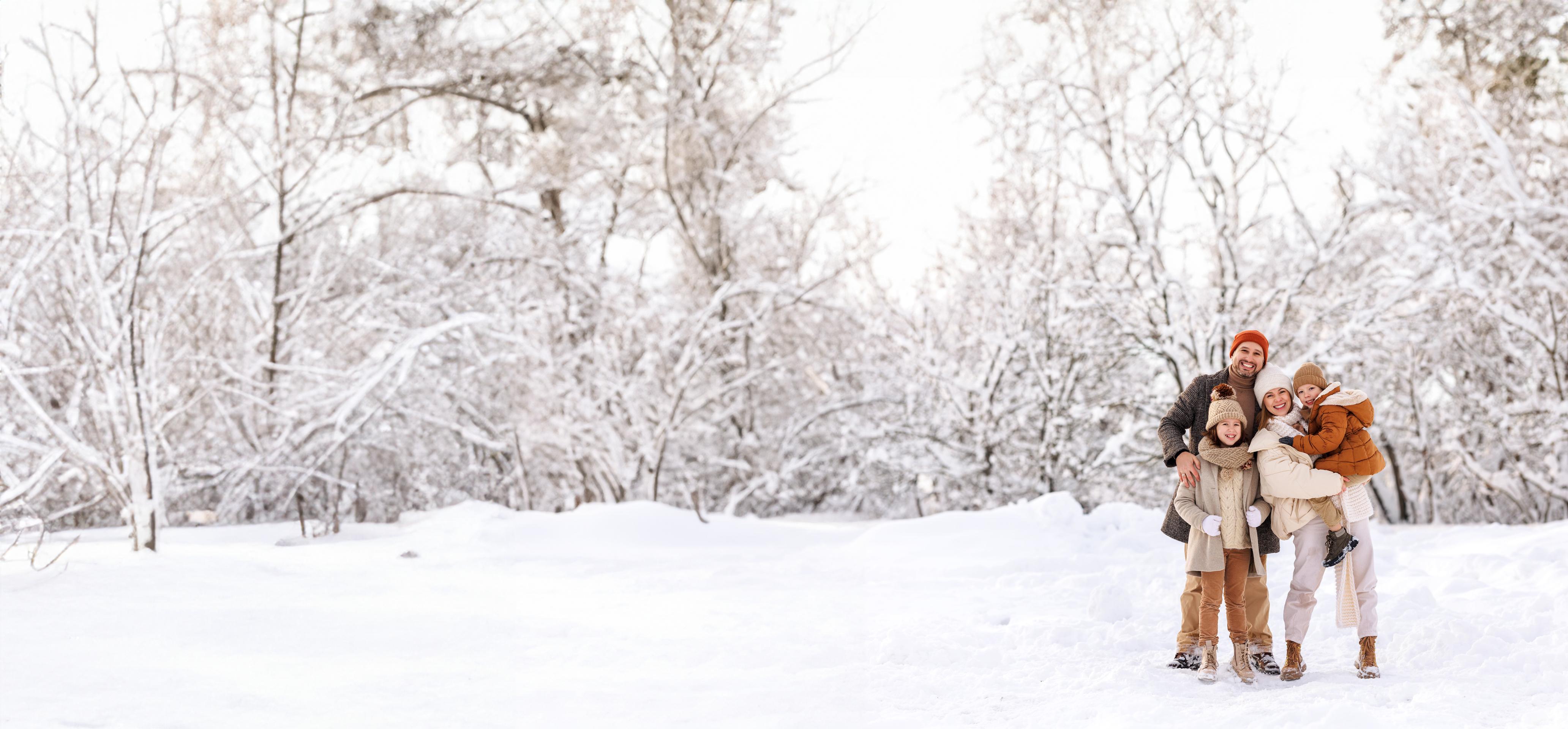

 TERRENCE MILLICAN
Bishop at All Nations
Pentecostal Prayer Church
PHOTO BY NICOLÒ SERTORIO
TERRENCE MILLICAN
Bishop at All Nations
Pentecostal Prayer Church
PHOTO BY NICOLÒ SERTORIO
Spiritual leaders are healing one of America’s most heartbroken cities
NICOLÒ SERTORIO J MICHAEL TUCKER & PHOTOG R A PHY BY
N THE WOODEN PEWS that stretch like open arms across the chapel of the North Oakland Missionary Baptist Church, a man sat alone. The stillness of the chapel seemed to flow from him. His head bowed, he flipped through the thin pages of his Bible quietly — whatever was happening outside of these walls, it didn’t matter in that moment. When photographer J Michael Tucker, on the other side of the church, saw him, he “was overwhelmed by the beauty of this scene.” So, he captured it, and with it the legacy of the Rev. Sylvester Rutledge Jr., the late pastor of North Oakland Missionary Baptist Church, the second-oldest Black church in Oakland.
Tucker and fellow photographer Nicolò Sertorio have spent years documenting the spiritual leaders of Oakland, California, in their joint project, “Sacred Paradox,” which explores the intrinsic wisdom, transformative potential and profound connection each of these leaders have to their hometown. It comes at an inflection point for Oakland. While the rest of the nation is seeing falling violent crime rates and felonies, in Oakland they’ve risen. Burglaries have increased by nearly 25 percent. Police services and violence prevention initiatives have been curbed. Businesses have left the city due to break-ins and crime, while an ever-growing homeless population continues to lose the battle against a stilted housing economy.
Phyllis Scott, pastor at Tree of Life Empowerment Ministries, believes that now, more than ever, “the community has to go back to caring about one another.” This conviction is one that connects each spiritual leader featured in “Sacred Paradox” — regardless of denomination, religion, race or identity. In it lies the hope that the togetherness that Oakland so desperately needs can be resurrected. “We’ve turned our back on the everyday people and it’s time for us to turn around and see them and rebuild this city,” she says. And it simply starts with faith.
By Lauren Steele
Late pastor at North Oakland Missionary Baptist Church
For over three decades, the Rev. Sylvester Rutledge Jr. pastored at North Oakland Missionary Baptist Church, where he led the second-oldest historically Black Baptist congregation in Oakland. The Rev. Rutledge moved to Oakland in 1964 after leaving family roots in Alabama and serving in the Air Force. Under his leadership, a 65-unit affordable housing project was opened by the church in 2003, marking a step forward in Oakland’s housing crisis.
Pastor at Plymouth United Church of Christ Marjorie Wilkes Matthews didn’t intend to become a pastor, but the open arms in her church have proved to be her “most profound treasure.” At a time when many churches are shrinking, Plymouth United is growing. “It’s a radically welcoming church,” she says. “The sense of ‘welcome home’ is the thing so many people here feel.”

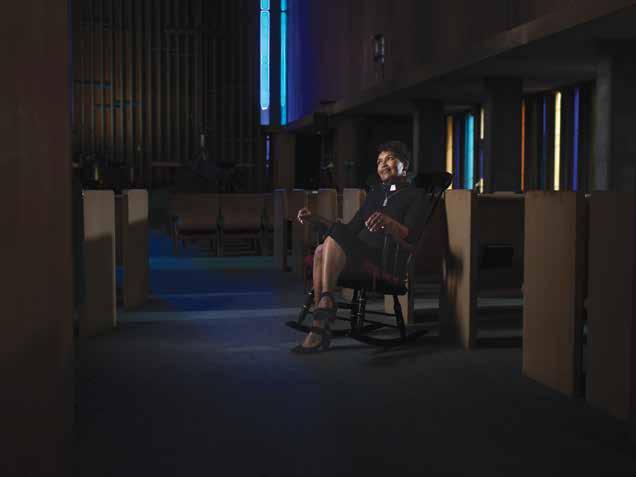
“Nobody wants to see people suffering.”SUNDIATA RASHID
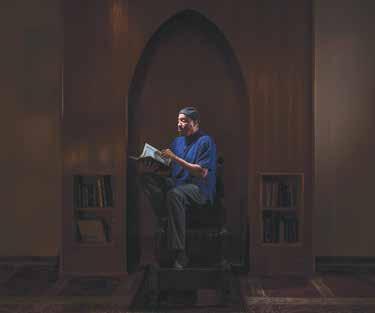
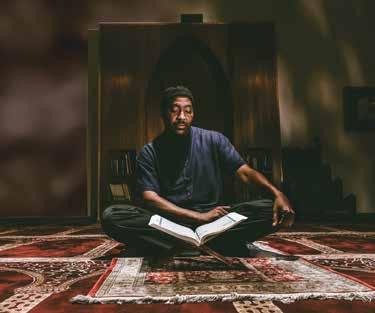
Imam at Lighthouse Mosque
Sundiata Rashid was raised in East Oakland, where he found religion as a teenager. “Shariah, the word for Islamic Law, means ‘the road that leads to water’ in Arabic,” he says. “In the desert, everyone wants a road that leads to water. People have to live their own lives. What they want to do is what they have to live with. I try to not be judgmental.”
“We are still called to lift our voice on behalf of the voiceless and stand in the gap for those unprotected.”
JACQUELINE THOMPSON

Pastor at Allen Temple Baptist Church
Jacqueline Thompson was 12 when she dedicated her life to God in Allen Temple Baptist Church. In 2019, she became the first woman to serve as senior pastor in the church’s 100-year history. “This mission still ignites me as it did that girl in the balcony many years ago,” she wrote in The Oakland Post. “We are still called to serve the least, the lost, and the left out. We are still called to lift our voice on behalf of the voiceless and stand in the gap for those unprotected.”


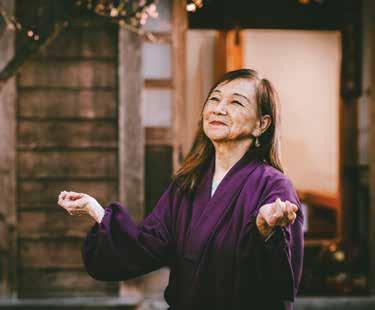
Former stake president in The Church of Jesus Christ of Latter-day Saints
When data showed homelessness spiking in a span of two short years in Oakland, The Church of Jesus Christ of Latter-day Saints partnered with government officials to build nine affordable housing units. “We are happy to be able to work with those most in need, with those in our community,” says President Darryl Rains.


Yoshi Akiba was born in Japan in 1942 and was orphaned during World War II. After moving to Maryland as a young woman, she found a love for music. With her husband, the Rev. Gengo Akiba, she moved to Oakland, opened the Oakland Zen Center in 1994, and has since co-founded the nonprofit 51Oakland to bring music and art to underserved Oakland public schools.

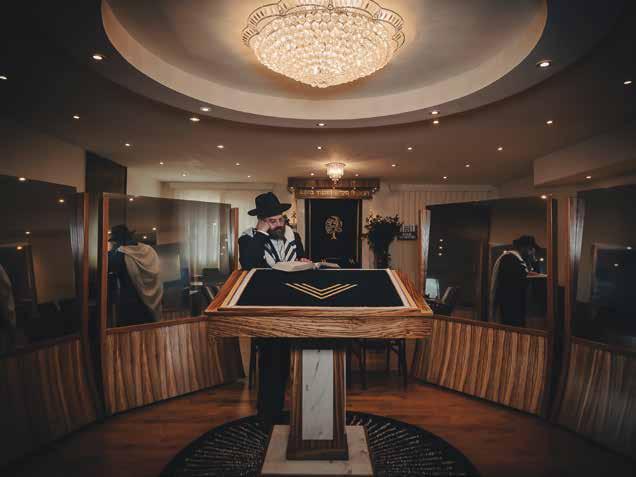
Rabbi at Chabad Center for Jewish Life
In the early 1900s, the Oakland area had one small synagogue. Today, there are more than 70 centers for Jewish faith, including the Chabad Center for Jewish Life, established by Rabbi Dovid Labkowski to create an “inclusive, vibrant and engaged community in Oakland.”

“The word of God says love is the greatest commandment. Can you imagine if we really loved each other, how we could turn this city around.”
PHYLLIS SCOTT
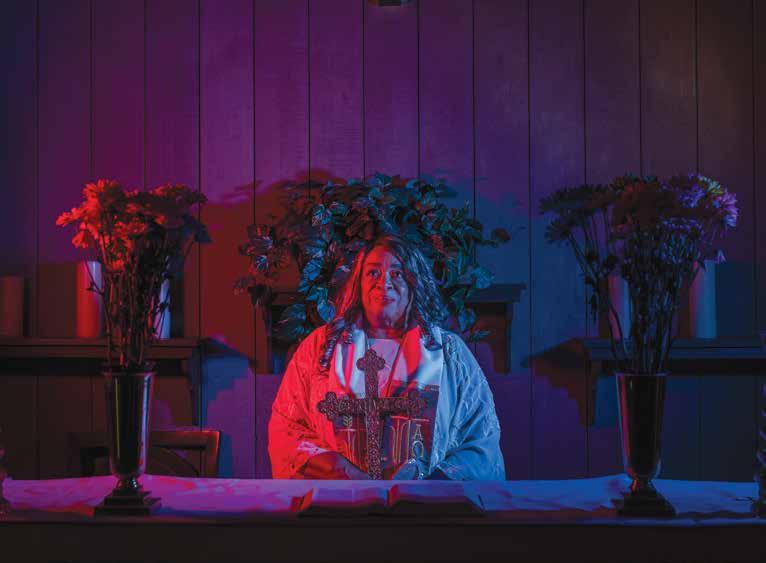
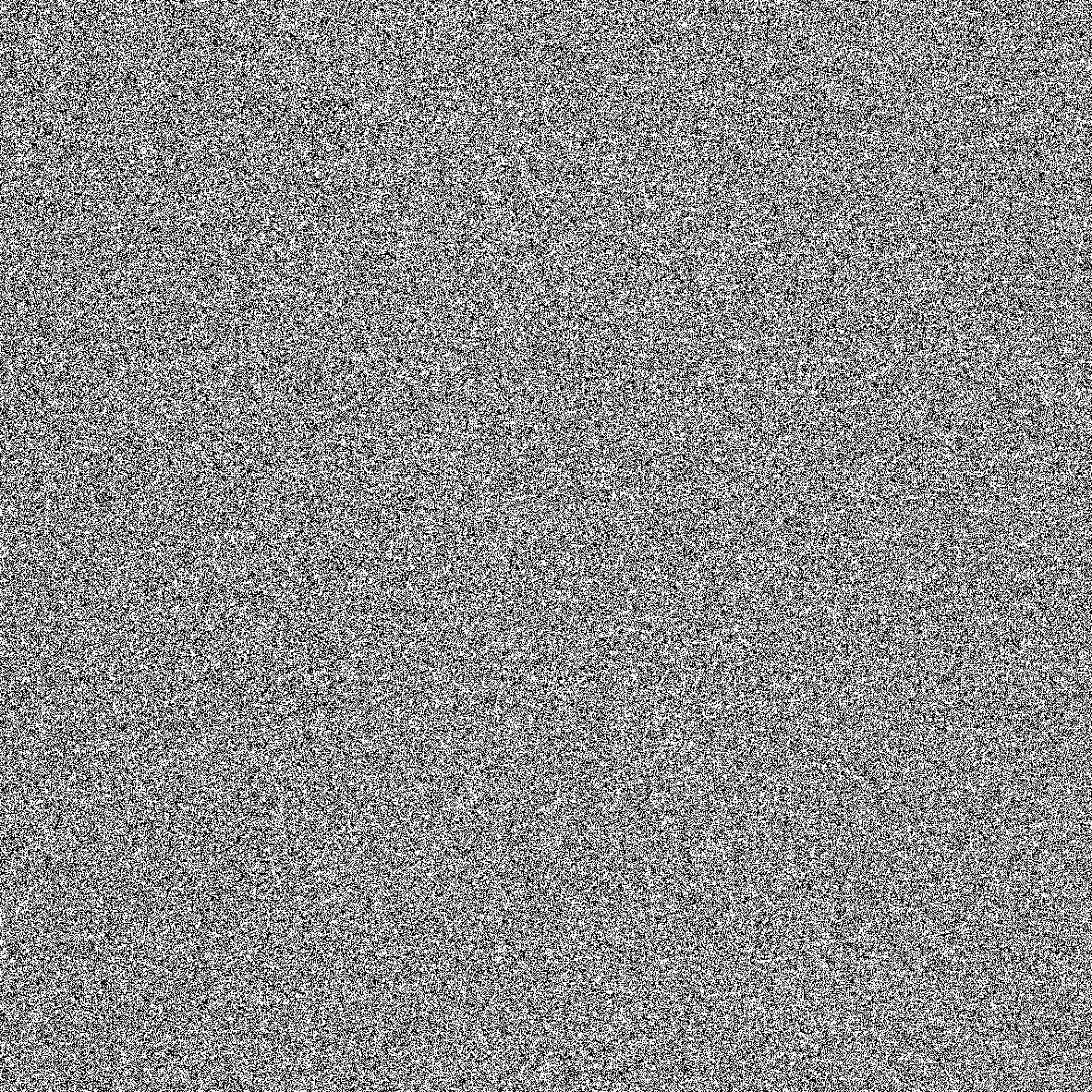
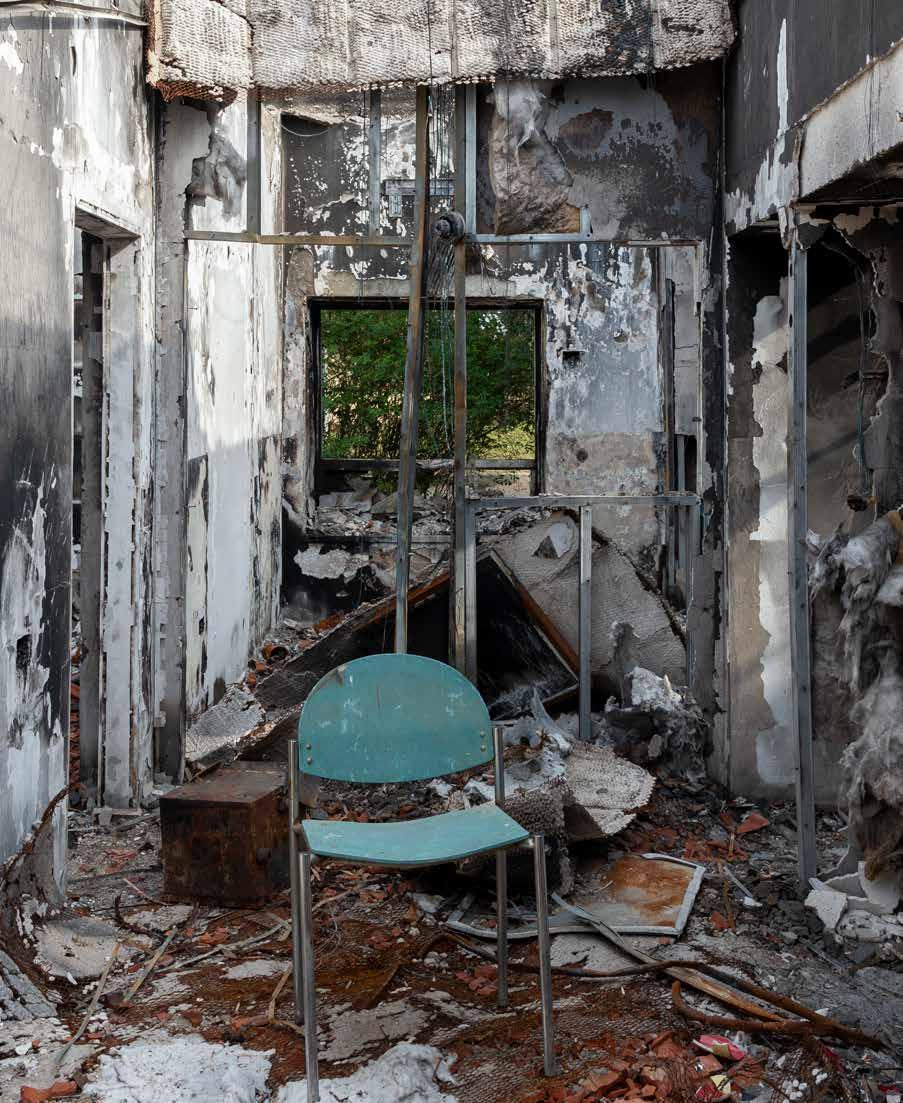 BY JESSE HYDE
BY JESSE HYDE

KIBBUTZ BE’ERI HELPED BIRTH THE ISRAELI NATION. THEN CAME OCTOBER 7
PHOTOGRAPHY BY
DANIEL ROLIDERThe pioneers came to make the desert bloom. Hafrachat hamidbar, that’s how they said it in Hebrew, and while Uri Hoter never used the phrase himself, he heard it often as a child.
By the time he was born in 1976, the kibbutz, known as Be’eri, had been around for 30 years. Its founding was legendary, not just among the pioneers, and not just in the kibbutz, but in Israel itself, because it was part of the founding story of the country.
Uri didn’t remember all the details. What he did remember was something called the White Paper, which laid out the laws of the land, back when the British were in charge. The law restricted where Jews could settle but had one strange loophole — that any settlement with a completed roof could not be torn down.
And so on October 5, 1946, a group of 1,000 pioneers pushed into the desolate Negev desert under the cover of darkness. They fanned out in 300 trucks — loaded with mattresses, bed frames, fence posts and buckets of nails — until they arrived at what would one day be known as the 11 Points. They worked all night, and by the time the sun rose over the rocky soil, they had built 11 settlements. Be’eri was one of them.
The British weren’t happy, but according to their own laws, the settlements could not be destroyed. The pioneers knew Partition was coming — that the land would be divided between the Arabs and the Jews — and they figured if they could essentially lay claim to open land in the desert, it would be given to them. They were right: The 11 settlements would eventually help form Israel’s border.
Uri heard this story so many times as a child, he lost count. Its repetition
underscored its importance. Within the insular kibbutz, he knew of no other version. He didn’t know others told the story quite differently, not of triumphant return and making the desert bloom, but of colonialism and conquest, of land theft and expulsion. Only later would he learn that the violence that would mark his life — the rocket attacks and the suicide bombings, the air raid sirens, the countless skirmishes in Gaza and the West Bank — had its roots in this story.
No, as a child, the story was not complex. It did not need to be told with caveats and apologies. It was simple and pure, like a folk story, or something from the Bible, perhaps the Book of Genesis, because it explained the beginning. The beginning of Be’eri, the beginning of Israel, the beginning of him.
NEXT YEAR IN JERUSALEM. For centuries, Jews cried out these words during Passover, dreaming of a return to Jerusalem, but it was just that — a dream. At the turn of the 19th century, Jews from all over the world, inspired by the idea of a Jewish homeland, dropped coins into the Jewish National Fund’s Blue Boxes to buy land in Palestine, making the dream of Zionism real. By 1948, the year Israel became a state, waves of Jewish immigrants over the previous decades grew to a flood. They came from Iraq and Yemen, from Germany and Poland and Lithuania. Some were Holocaust survivors — 140,000 between 1948 and 1952 — and some were refugees fleeing Arab countries (nearly 1 million during this period).
The kibbutz, though, was a symbol of the Jewish people’s rebirth. By 1950, there were 214 in Israel, small communal villages.
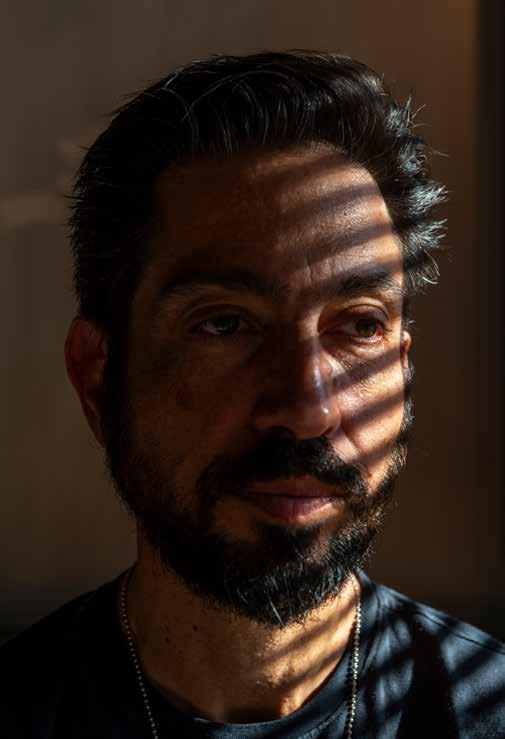
Because Jews had been prohibited from owning land in many of the countries from which they immigrated, to be a farmer was noble, to work the land sacred.
By the 1980s, the desert of Negev had truly bloomed: The homes in Be’eri were arranged in orderly rows, painted white with tile roofs. Life had also changed. The early settlers gathered every Yom Kippur to tell the story of the 11 settlements, how as children they chased lizards and butterflies, walked barefoot among the thorns to make their feet tough like the Bedouins. But
those were the old stories. By the 1980s, life had become much more structured, like life in America: Uri had orchestra practice and basketball games. There was high school to prepare for and after that, mandatory military service and then college.
Still, when Uri visited his uncles in Tel Aviv, he realized how unusual life in the kibbutz was, that Israel was modernizing and drifting from the socialist ideals upon which it had been founded. The kibbutz, it seemed, was 15 years behind. In the kibbutz, the TVs were still black and white. If
a relative from Haifa or Be’er-Sheva called the rotary phone, which hung in the dining hall, you’d have to go fetch whoever they were calling, which sometimes could take half an hour. In the kibbutz, there was only one kind of shampoo. In fact, Uri thought conditioner was called Rinse because that’s the only brand the committee bought. He was fascinated by America, but felt like he lived in the Soviet Union.
He had one pair of shoes for summer and one for winter, and Uri looked forward to getting a new pair. It was a ceremony of sorts, a ritual, not quite like Passover or Hanukkah, but to Uri just as special. They’d go into the communal dining hall and pick their shoes from boxes, arranged by size. “Please let me get sneakers this year,” Uri would beg his mom, but she would always insist he pick sturdy work boots that would last all year. In the summer, he wore sandals. They were called Bible sandals because they looked like the sandals David once wore.
And yet, as impervious as Be’eri seemed, the world was seeping in, forcing the kibbutz to modernize. In 1985, the secretariat committee, which made all decisions for the kibbutz, voted to eliminate the children’s house. Since Degania, the first kibbutz in Israel, the children’s house had been a central feature of all kibbutzim. It had arisen partly out of necessity; to build a community in the swamps of Galilee or the craggy hills of Golan, all abled-bodied adults needed to be free to work, including the mothers. The children, then, lived in their own house, where they were taught and tended to by a nanny, or metapelet
Uri didn’t mind living in the children’s house. He could only remember once or twice, when he was two or three, going out into the night and walking to his parents’ house, and through tears asking to sleep in their bed. His mother firmly said no and brought him back.
And yet, he grew to like the independence, and he grew to form strong bonds with the other children his age. They were like his brothers and sisters.
But other people hated it: Some moms refused to put their children there, and so, the
kibbutz eliminated the house. This meant greatly expanding the size of the homes in Be’eri, to accommodate actual families. The decision came at a time of deep financial crisis for Israel, of crippling inflation. Many of the kibbutzim in the country, which had been propped up by government loans, could not pay their debts and collapsed.
Be’eri was different. It was much more than just a collective farm by 1985. It still had miles of fields, producing lemons and grapefruit and cotton and wheat, but its economic engine was a large printing facility, which printed all the driver’s licenses in the country and many of the credit cards. Most born into the kibbutz worked within its walls — Uri’s father worked for a time in the printing plant and his mother worked at the high school — but even those who worked outside the kibbutz still put their salary back into a communal pot. Because of this, and the success of the printing facility, Be’eri was rich. It didn’t just have a swimming pool like other kibbutzim; it had a tennis court, a fleet of over 100 cars and a fund that paid for the education of all children born on the kibbutz, all the way to a Ph.D. There was also money for vacations — a month in Australia, three weeks in Nepal and Tibet — and weddings, and parties, and jeep excursions into the Negev.
While other kibbutzim were declaring bankruptcy, or succumbing to privatization and the allure of capitalism, Be’eri flourished, and held to its founding principles. The entire kibbutz still shared its meals in a communal dining hall, gathered together for holidays, and cared for each other like a large family. Few left; in fact, there was a waiting list to get in.
Wandering the kibbutz on spring mornings, while his mother listened to Leonard Cohen records and the old men sat on porches smoking and reading the newspaper, Uri felt safe, like he was living within a walled garden.
But beyond the yellow gate of the village, there was another world, just five kilometers away. And in that world, something dangerous had begun to take root.
IN HIGH SCHOOL, Uri mostly hung out with kids from Be’eri, or other kibbutzniks in the

area. Each year, volunteers from the U.K. and Holland would come to help in the garden or the fields, a sort of rite of passage for Jews outside of Israel. The volunteers lived in a row of small, cramped houses in a neglected part of the kibbutz, which was jokingly referred to as the ghetto. Uri was fascinated by them, but too shy to really become friends, too embarrassed of his English to have more than a fleeting association.
It wasn’t until he was 18, when he moved out of the kibbutz for the first time for military service, that his perspective really began to broaden. After the equivalent of basic training, he was selected for an elite intelligence unit stationed in Tel Aviv. Because everyone in Israel is required to serve in the military, most units include all social classes and backgrounds: poor kids from Jerusalem, devoutly religious men who wrap tefillin around the arm during morning prayers, the Tel Aviv upper crust. But Uri’s unit was different. It seemed to only include the well-educated of Israeli society.
Uri’s understanding of Israel, and its place in the world, expanded during this time. While he had always felt safe in Be’eri, he had known Israel had enemies. In 1980,
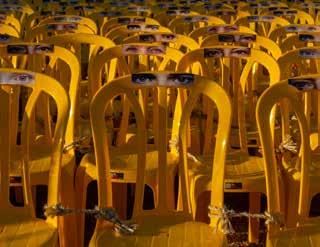
IN THE WAKE OF THE OCTOBER 7 ATTACK, WEEKLY PROTESTS WERE STAGED AT WHAT BECAME KNOWN AS THE HOSTAGES SQUARE, IN FRONT OF ISRAEL DEFENSE FORCES HEADQUARTERS, INCLUDING HUNDREDS OF EMPTY CHAIRS, REPRESENTING HOSTAGES TAKEN BY HAMAS.
when he was four, Palestinian terrorists had cut the fence on the border of Israel and Lebanon and snuck into a kibbutz called Misgav Am. They made their way to the children’s house, where they killed the kibbutz secretary and a two-year-old toddler and then snatched two babies from their cribs. They then headed to the second floor, where more children were sleeping. With these hostages, they barricaded themselves and a standoff with Israeli special forces ensued, climaxing the next day with the death of the terrorists and an Israeli soldier.
Everyone knew this story, but in Be’eri it felt remote. Now that he was in the military, he realized that while Israel was strong, and
Even though the kibbutz sat on the border from Gaza, he didn’t think it was a target, or even in danger. Many of the older kibbutzniks still communicated with Gazans who had once worked on the kibbutz, and still considered them friends. Be’eri included world-famous peace activists, like Vivian Silver, and they viewed the plight of the Palestinians with sympathy. Israel had become an occupying force in Gaza: With Egypt, it effectively controlled Gaza’s borders and did not allow it to operate an airport or seaport, crippling its economy. Israel cited security concerns as justification, but the blockade was devastating: Unemployment levels in Gaza were among the highest in
but this was a one-time thing, for the rest of his life. Once he came back, he could not leave again.
THE BOMBINGS, THE rockets, the mortar fire became routine. At work in Tel Aviv, Uri would continue his meetings while running to a bomb shelter. He’d be on the highway, driving to the kibbutz for the weekend, and suddenly he’d hear the air raid sirens. Everyone would pull over, get out, and lay down on the asphalt, until the sirens went off and then get back in their cars and carry on as if nothing had happened. In Tel Aviv, you had 90 seconds to get to a bomb shelter when the sirens sounded. In a kibbutz
could defend itself, it was also surrounded by countries that wished it didn’t exist.
Then came the Jaffa Road bombings. Early on the morning of February 25, 1996, a bus exploded in Jerusalem, killing 17 civilians and nine Israeli soldiers. A week later, another suicide bomber boarded another bus on the same route, killing 16 civilians and three Israeli soldiers. The day after that, at the biggest shopping mall in Tel Aviv, another suicide bomber blew himself up, killing 13 and wounding 130 more. Three suicide bombings in nine days. The mastermind of the attacks was a man named Mohammed Deif, the eventual head of the Qassam Brigades, the military wing of the Islamist organization known as Hamas.
By the early 2000s, there were so many bus bombings in Tel Aviv that Uri began scanning the faces of those on the buses and looking for anything suspicious, like a bulky coat, or a large bag. Sometimes, he just had a feeling he shouldn’t get on, and that was enough.
By this point, Uri had finished his military service and was living in Haifa to attend college, where he was studying computer engineering. On weekends and holidays he returned to the kibbutz, which felt a world removed from the bus bombings and terror in Jerusalem and Tel Aviv.
the world, with 1.3 million people requiring food assistance. The kibbutz began collecting money and sending it to Gazans. They arranged rides for Palestinians to hospitals in Israel.
The people of Be’eri wanted a government that pushed for peace, not war, and even when Qassam rockets started landing near the kibbutz, they remained committed to peace. Sitting in bomb shelters, they reminded their children that the kids in Gaza were scared too, that it wasn’t the Palestinians who hated them; it was Hamas, a terrorist organization.
By 2006, Uri started to bristle at the demands of the kibbutz. He was 30 now, a full member, with all the privileges that entailed. Be’eri had become one of the wealthiest kibbutzim in all of Israel, and the days of having one pair of shoes and a pair of sandals were long gone. To live in Be’eri now was sort of like living in a country club, or a gated community, and a very nice one at that, with a long waiting list that essentially meant unless you were blood, or married the blood of the founders, you were not getting in.
And yet, he no longer wanted to have to run his decisions by someone else. In 2008, he asked to live in Tel Aviv for two years. The secretariat granted him permission,
like Be’eri, which sat on the border of Gaza, you had 15 seconds. The rocket fire became so persistent, a site started in 2014 called israelhasbeenrocketfreefor.com. From its launch until its last update in 2019, not a single month had passed without a rocket landing in Israel.
Uri decided not to return to Be’eri. He loved life in Tel Aviv — the art galleries, the restaurants, the nightlife. He needed culture. He’d grown up playing the drums and now he played in a band. He worked in the Tel Aviv tech sector and felt content with how his life had turned out. It was a far cry from the life of the pioneers, but in a way, he embodied the journey of Israel itself. Once a kibbutznik, he was now fully enmeshed in Israel’s future. Start-Up Nation, they called Israel. The Silicon Wadi. He still returned regularly to the kibbutz to visit his parents, who had divorced when he was a child but remained in Be’eri, just in separate houses. He kept in close contact with the kids born in his year. Most had moved to the big cities of Israel — Tel Aviv and Haifa — but a few from his birth year still lived in the kibbutz, and were raising their kids there. They weren’t chasing lizards like the pioneers had, but the quiet, pastoral life persisted. There were still orchards and gardens of flowers. Nights of
stargazing and bonfires. Hikes in the Negev and picnics on summer afternoons. Uri may have chosen a different life, but he still understood the allure of the kibbutz, why most of them had never left.
On October 6, 2023, he left his apartment in downtown Tel Aviv before dusk. It would take him about an hour to drive to Be’eri. That night the kibbutz was holding a birthday party. It had been 77 years since the pioneers loaded up their trucks, set out into the desert, and built the 11 settlements.
who was also staying at their mom’s house for the weekend, came into the kitchen. She was still in her pajamas.
“What’s going on?”
Uri shrugged. He had not heard the air raid siren. Some kind of military training exercise perhaps? Nothing to be worried about.
“I don’t know,” he said, reconsidering. “I think we are bombing Gaza, and if we are bombing Gaza, they are probably going to bomb us. Maybe let’s go down to the safe room just in case.”


Tonight, the kibbutz would gather in the auditorium where they held concerts and screened movies. The children of the pioneers, now in their 70s and 80s, would take the stage to tell their origin story. They would tell stories of the war of independence, how people like Uri’s uncle, for whom he was named, had died to defend their new nation. And then they would sing the song of the night of the 11 settlements. They would remember how things had been, and how, in spite of how much Israel had changed, Be’eri had not changed so much.
After the event, they would spill out of the auditorium and linger by the water tower, or in front of the library and the swimming pool and chat late into the night, smiling, aglow, swapping old stories and memories of happy times, making each other laugh so hard they were crying, the way you do with friends who feel like family. And then they would stumble to their beds, with that warm feeling in your belly of being among those who love you most, behind the security of their yellow gate.
They would have no idea of the horror about to unfold.
URI WAS STANDING in the kitchen of his mother’s home drinking coffee when he heard the first bombs. It was October 7, the morning after the party, just after 6:30 a.m. More bombs, more rockets. He sipped his coffee. This was unusual. His sister Noa,
Across the kibbutz, from phone to phone, WhatsApp was lighting up with messages. Two men on a motorbike wearing the green bandanas of Hamas had been spotted. They were carrying rifles. In Uri’s neighborhood, known as the Olives, pickup trucks loaded with gunmen from Gaza were arriving. What looked like Hamas commanders were giving instructions, not just to men dressed like soldiers, but to young men in polos and jeans, who carried machetes and knives.
At the yellow gate, two bearded men approached. They wore fatigues and body armor, like U.S. Special Forces. They moved cautiously, their rifles extended, the safety off, the trigger finger at the ready.
A car approached. The men slipped into the shadows. The sensor on the gate read the pass on the car’s dash, and the gate opened. The men in the fatigues reemerged and opened fire, the bullets ripping through the car and killing the two young men inside.
Unaware of what was happening outside his mother’s home, Uri had left the safe room, because the routine was to stay for a few minutes and then leave.
“I think I hear gunshots,” his mother said. Uri could hear them too. His mother’s phone buzzed. It was the kibbutz app for all residents. “Suspected infiltration,” it read.
Every home in Be’eri had a safe room of reinforced concrete and blast-proof windows. Because rocket attacks were so common, safe rooms doubled as bedrooms, typically for children. Most did not lock
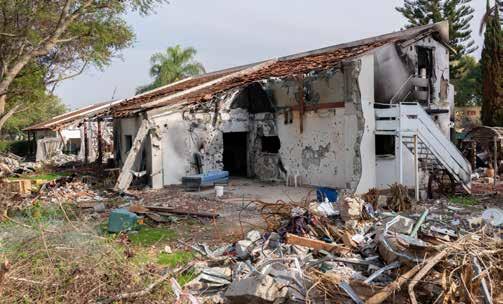
from the inside as a safety precaution: A safe room was designed to protect residents from a rocket attack, and if a rocket caused, say, your roof to cave in, rescuers needed to be able to open the door. This meant the only way to keep your safe room shut, if someone wanted to get in, was to hold the handle.
But the safe room in Uri’s mother’s house was unique. It had two doors, an exterior iron door and an internal wooden door. And the iron door locked from the inside
“We need to go to the safe room,” Uri told his sister. “Get mom.”
Once inside, they pushed a dresser against the door, another layer of security. Uri still wasn’t sure what was happening, but he figured they should not sit near the door or the window, where bullets could possibly hit them. As luck would have it, they also had a piano inside the safe room. He whispered to his sister that if they heard someone enter the house, they’d push the piano in front of the door too, making it nearly impossible to enter. Uri turned off the lights and shut the protective metal plating over the safe room’s one window. They were now in darkness.
Uri’s mom’s phone lit up. Another message from the kibbutz security team. They were handling the incident, they assured the kibbutz.
What no one knew, however, is that the head of the security force, a man named Arik Kraunik, had already been ambushed,
about 100 meters from the kibbutz gate. He had the only key that opened the armory that held M16 rifles and ammunition. With no way to get inside the armory, the remaining six members of the security force had nothing more than handguns and single shot rifles. And not nearly enough ammunition. The army, meanwhile, was pinned down, and wouldn’t arrive for hours.
Across the kibbutz, gunmen were going door to door. They dragged old women from their homes and paraded them down the streets of the kibbutz and then stuffed them in the backs of trucks. Later in Gaza, social media would show Hamas soldiers returning with hostages. The body of a dead Israeli soldier was dragged from the bed of a truck and surrounded by a mob that stomped the corpse. A young woman taken hostage was pulled from the back of a dusty jeep, barefoot and cuffed. Her sweatpants were soaked in blood and blood trickled from her face and hands. “Allahu Akbar,” the crowd chanted.
In the safe room, the sound of gunfire was growing louder. The assailants were drawing closer.
Uri had decided that he would monitor incoming information and choose what to share with his mother and sister to keep them calm. His mother, who was 71, had gone into what seemed to Uri a dissociative state, but Noa was on the verge of a panic attack.
“Where’s the dog?” she asked.
“I don’t know,” Uri said. He realized they’d left their dog, a spaniel named Luna, outside the safe room.
“We need to open the door to let her in.”
“No way,” Uri whispered. “The next time I’m going to open the door is when I know there’s an Israeli soldier on the other side.”
Uri could not figure out why the military had not yet arrived. It was 10 a.m. and they’d been in the safe room for three hours. He started to worry about his mother’s asthma. He knew she’d stay calm, even if the terrorists entered the house, but worried she might cough. He wanted to ask her if she had her medication but decided against it. If she didn’t have it, she might panic and start coughing and then they’d be discovered.
From phone to phone, on the kibbutz private messaging app and WhatsApp groups for mothers and teenagers, the messages were coming in a torrent of panic and disbelief.
Why is the army not coming?
We are going to die. I never thought we would die this way.
Several wounded: come quickly! Now! Please!
Dad, Carmel is taking his last breaths.
Please, please, please, please make it stop. They’re here.
And then came the sickening realization that the safe room wasn’t that safe, after all. When the terrorists could not break open a safe room door, they would set the house on fire, forcing the most hellish of Faustian bargains: Open the door and be kidnapped or killed, or burn alive.
Someone was knocking on their door loudly, yelling something in Arabic. Uri motioned for his sister to help him push the piano in front of the safe room door. When they finished, they retreated to a corner of the room where bullets couldn’t hit. Noa started trembling uncontrollably and tears were streaming down her face. Uri pulled her close. “Listen, listen, I think they are going to shoot at the safe door, and they might explode something. We need to stay quiet. Even if we are afraid.”
The sound of gunfire echoed through the
safe room in a thunder. They were shooting at the door, as Uri had feared. Then he heard what sounded like a grenade explode. And then silence. Arguing. And then the men left and the house fell silent again.
Uri figured they had started a fire, but he wasn’t sure, so he put his hands against the safe room’s metal door to see if it was getting hot. He felt nothing. He turned on the light on his phone to see if any smoke was coming in under the door. Nothing. But moments later he saw the first wisps of smoke coming from the vents above him. Panic coursed through his body. The house was on fire.
Uri stripped off his shirt and held it against the crack between the safe room door and the floor, while Noa soaked her shirt in water and then held it against her nose. He instructed his mother to do the same and motioned for Noa to turn off the air conditioner, because it was circulating smoke into the safe room. They sat there for what felt like an hour. Miraculously, the fire went out.
As the hours passed, they heard more footsteps, but it sounded like people were simply ransacking the place. He heard voices talking in Arabic, arguing, and then the sounds of drawers opening and closing, furniture being upended, glass smashing. Laughter. For hours, people came and went.
what he would ask, knowing that terrorists had lured out other kibbutzniks by speaking in Hebrew and claiming to be soldiers. Uri would ask questions only fellow soldiers would know: What is your unit? What are the insignia on your uniform and what is your rank? But there was no need. The soldiers had spotted the family dog, which was hiding, and he could hear them talking about it. No terrorists would speak in Hebrew about a dog.
To be safe, he asked his rehearsed questions anyway and then explained to the soldiers that they had barricaded themselves in the safe room and they couldn’t open the door. Instead, they would jump out the window. Five soldiers waited for them below the window, one holding Luna in the crook of his arm, and told them it was safe to jump.
The Hamas terrorists had cut the electricity in the midafternoon, and now evening had fallen. It was hard to see anything, and homes were still burning. Off in the distance, on the other side of the kibbutz, gunfire cut through the air. The soldiers led them a few hundred yards from their neighborhood to the kibbutz cemetery and told them they’d have to wait there.
More than 100 residents of the kibbutz had been killed — roughly 1 in 10 members. Another 30 had gone missing. Through the black smoke, Uri could see little more than smoldering ruins. Cars belonging to the kibbutz were riddled
with bullets. An Israeli tank was parked in front of the yellow gate. Corpses from terrorists and kibbutz members were strewn throughout the neighborhoods where Uri had played as a child. Soldiers instructed parents to shield their children’s eyes as they led them to safety. They would later report finding people who had been handcuffed and shot in the head.
At 7 p.m. — roughly 12 hours since the massacre began — the first buses arrived to take survivors to a resort at the Dead Sea.
THE ROAD FROM Be’eri to the Dead Sea cuts across most of Israel before arriving at the Judean Desert. It’s a journey through an empty and barren land of plateaus and deep wadis, with the occasional Bedouin village. There is a quality to it that is both serene and haunting. Suddenly, the road drops steeply until arriving at the Dead Sea, the lowest point on Earth.
When I arrived it was December, a few days after Hannukah, and brightly colored children’s bikes crowded the entrance to the resort in a messy pile. Since October 7, most survivors from Be’eri had been living in the resort. I could hear high-pitched voices of children throughout the lobby and down by the restaurant, and bare feet slapping across the cool stone floors, as the children called out to each other in what seemed like improvised games.
Finally, after about 11 hours in the safe room, Uri heard the sound he’d been waiting for: Hebrew. He had already rehearsed IN
Outside, the Dead Sea’s turquoise water,

the soft breeze, the white sandy beach — it seemed almost cruel: an awful reminder of how beautiful life can be, how in another time the people who now made the resort home would be here to vacation, to laugh, to play games, to doze in the sunlight with warm sand at their feet. Now, there were Israeli flags hanging from balconies and the feeling was more of a way station between two realms of existence.
When they first arrived, members of the kibbutz hugged each other for so long and so often that one member, Michal Pinyan, told me she now thinks of it as “the hugging time.”
“We hugged like we never did before,” she said. “The first two weeks were full hugs with everyone.” She told me people often stood in the lobby, in hallways, holding each other and just sobbing.
Another member, Miri Gad Messika, told me she often watches her friends, people she grew up with, looking through the resort’s floor to ceiling windows to the pale blue waters of the Dead Sea, their eyes hollow. “We lost so many people. Most of them are my friends. My mother’s friends. My kids’ friends. I see children who lost their
live peacefully with them, rather than engage in an endless cycle of war.
An estimated 20,000 Palestinians had already been killed in Gaza amid Israel’s retaliatory response to the October 7 attack (that number now exceeds 30,000) and 2 million had been displaced. Global observers had begun to call Israel’s incursion into Gaza a genocide and yet the Israeli military was pushing forward, reducing everything in its wake — apartment buildings, schools, mosques — to rubble.
“Every parent tells their children, ‘When you are 18 you won’t have to go to the army because we will not need an army because there will be peace,’” a man named Elad Kedar told me. “My parents told me this, and their parents told them. And we told our children.” He smiled ruefully. “We had that hope.”
Mostly, what people wanted was the return of the hostages. When I arrived, a cease-fire had just ended during which 105 hostages were released. Another 130 remain in captivity. The thought of them being trapped somewhere in Gaza seemed unbearable.
Today, Be’eri is in ruins. Where homes
army, just two weeks after the attack, to assess the wreckage. While the home sustained some fire damage, and his mother lost valuable jewelry, the home is largely intact. His father’s home is also in decent shape, although both need repairs before they will be livable.
The future of the kibbutz is in doubt, however. Most people I met at the Dead Sea told me they planned to go back, but in the ensuing months that resolve seemed to wither. People started leaving the resort in small groups, not to go back to Be’eri, but to start a life elsewhere. And while most do plan to return, they have no idea how long they will have to wait, or if they can ever truly feel safe living next to Gaza.
“We had our life taken from us, even though we are alive,” said Meyrav King. “And we’re really grateful we’re alive, but our life was taken from us. I mean, there’s nothing. It’s not just the house and the stuff in the house. It’s all our memories, our work, our friends, our family.”
The last time I talked to Uri, he stressed the kibbutz wasn’t perfect. I had been
OCTOBER 7 WAS THE LARGEST SINGLE-DAY MASSACRE OF JEWS SINCE THE HOLOCAUST. AND NO COMMUNITY IN ISRAEL LOST MORE PEOPLE THAN BE’ERI.
parents and are now alone, or parents who lost children. I see a woman, and I know who she’s lost, and it’s like she’s looking through you. She doesn’t even want your eyes to meet because her husband was murdered.”
I asked her how she copes with the loss.
“There is no way to process this,” she said. “It isn’t one person that you lost. It’s your entire community. It’s over 100 people. How do you begin to process what we’ve been through?”
October 7 was the largest single-day massacre of Jews since the Holocaust. And no community in Israel lost more people than Be’eri.
What struck me most is that no one I talked to at the resort, or at Be’eri, blamed the people of Gaza. While their fury toward Hamas was palpable, they still expressed sympathy for the plight of the Gazans and wanted their government to find a way to
once stood, craters gape in the dirt. Bullet holes are everywhere: riddling refrigerators, pockmarking exterior walls, even shredding Israeli flags and picnic umbrellas. Houses have been reduced to charred husks. In one safe room I entered, everything was black, even a children’s white teddy bear covered in soot. Walls and floors were still thickly smeared with blood in some homes.
In the first week after the attacks, Uri slept in the hotel where his mother had been sent to in Tel Aviv (his father was sent to the Dead Sea resort, with most of the other kibbutz members). Uri said he still visits his mother every few days at the hotel, and every few weeks he goes down to the Dead Sea to see his dad and other kibbutz members.
He’s been back to his mother’s home in Be’eri four times, the first time with the
asking him about things I had read from obituaries of early members of Be’eri, their memories of gardens of oleander and falling asleep in orchards of peaches and plums. He grinned and shook his head gently. It wasn’t all chasing lizards and butterflies and looking at the stars, he told me. As children they could be a “bit nasty.”
And yet, when I asked him how he will remember Be’eri, he closed his eyes and a smile spread across his face. “There’s this time of year in Israel when the orange blossoms open and for some reason you can smell it across the whole country. And then the bees come, and you can hear the bees, and then the birds. In the kibbutz, that meant the arrival of summer, and that meant the swimming pool. Those long summer days.”
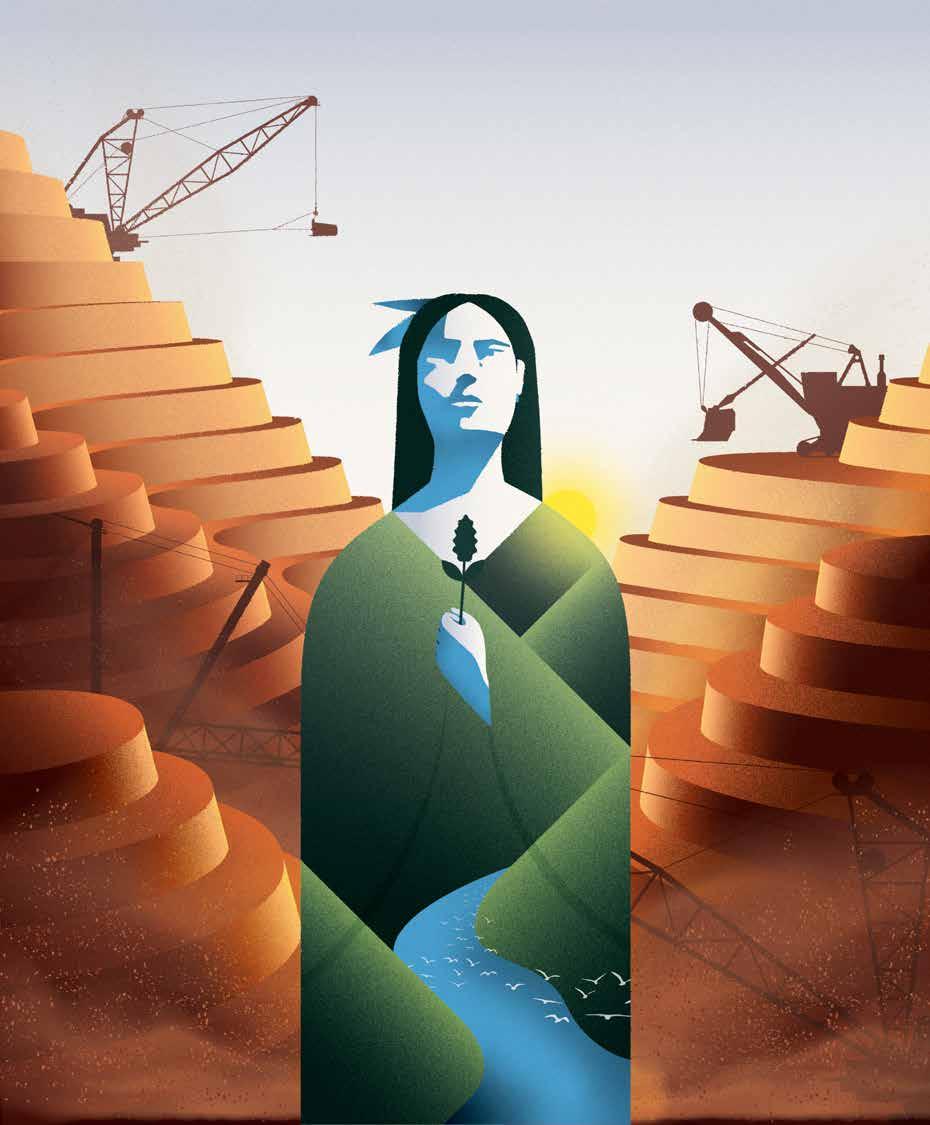

MEET THE D.C. LAW FIRM BRINGING RELIGIOUS FREEDOM TO ALL
BY Mariya ManzhosILLUSTRATION BY Ian Sullivan
Vanessa Nosie strapped her four-day-old daughter Shá’yú in a car seat and told her husband to drive west, straight from the hospital in Globe, Arizona, where she had just given birth. They drove to Chi’chil Biłdagoteel, or Oak Flat, the Apache sacred land, where Vanessa prayed, picked acorn and sumac berries with her grandmother, and held ceremonies for women in her family. There, she pressed Shá’yú’s tiny bare feet to the ground, her first encounter with Oak Flat. One day, Vanessa hoped, Shá’yú too would have her sunrise dance at Oak Flat, a coming-of-age ceremony inseparable from this land.
The urgency behind Shá’yú’s road trip was fueled by the threat of a mining project by Resolution Copper, a subsidiary of two international mining giants, Rio Tinto and BHP, that would shut down access to the land and begin turning Oak Flat into a 1,100-feet-deep and two-mile-wide crater, if the project moved forward. What if her daughter missed her chance? “Our direct connection to God is here, it’s where we listen to the Creator,” Vanessa told me. “Oak Flat is crucial for our survival.”
On a chilly Friday night in January, Vanessa fetched a handful of sticky dough out of a bucket, dipped it in flour, and massaged the mass into a smooth ball. Vanessa’s family — kids, parents, sisters and a few activists — huddled around the fire at the Oak Flat campground, which has become a kind of headquarters for the Apache Stronghold, a group of San Carlos Apaches that coalesced to fight the government to preserve their land. Vanessa’s father and the group’s spiritual leader, Wendsler Nosie Sr., who now lives at Oak Flat in a trailer, has described the land as a Mount Sinai of the Apache people — a place of spiritual rootedness that’s core to being an Apache. I was among a dozen visitors who joined the Apache Stronghold members for the weekend, because I wanted to better understand the significance of Oak Flat for the Apache religion.
A part of Tonto National Forest, Oak Flat has been under threat since 2014, when Arizona Republican Sens. John McCain and Jeff Flake added a late-night “rider” onto a must-pass defense bill, which authorized the government to transfer 2,400 acres
of land to Resolution Copper, in exchange for other valuable parcels. But the years of legal battles over Oak Flat ramped up in 2021, after the outgoing Trump administration published the environmental impact statement, revealing troubling effects of the mining project: dewatering, burial damage, over 1 billion tons of toxic waste. The Apache Stronghold filed a lawsuit to stop the land transfer, but the district court struck it down.
Luke Goodrich, an attorney from Becket, one of the country’s leading religious liberty litigators, took on the case. To learn about Oak Flat, Goodrich, a devout Christian, camped with the Nosie family, joined them for a Sunrise ceremony, and wandered the craggy landscape, thinking about the case. He filed an emergency brief to the 9th Circuit Court of Appeals, but the three-judge panel ruled against preserving Oak Flat, claiming the land transfer did not constitute “substantial burden” on the Apache religion, the first step under the Religious Freedom of Restoration Act, or RFRA. Five months later, the court agreed to rehear the case before a full 11-judge panel.
A public interest law firm in Washington, D.C., of about 20 attorneys, which now goes by Becket to avoid confusion that they offer funding, has defended religious freedoms of Catholics, Evangelicals, Muslims, Sikhs, Jews and Native Americans — all free of charge — for over 30 years, marked by a string of significant Supreme Court wins. With the Apache case, Becket faced an uphill battle: The case lacked favorable precedent, the government argued, and the group had no right to the federal land.
In March 2023, Goodrich stood before the 9th Circuit Court of Appeals judges, arguing that the complete obliteration of Oak Flat would “substantially burden” the practice of the Western Apaches’ faith, a right that RFRA protects. Goodrich started his argument with what appeared to be the point of agreement. “Both parties agree that if the United States government put up no trespassing signs and threatened the Apaches with fines for accessing Oak Flat, that would be a substantial burden,” he told the judges. “Here the government … is not just threatening fines but authorizing complete physical destruction of Oak Flat, barring the Apaches from ever accessing it again and ending their core religious exercises forever.” For about an hour and a half, the judges grilled the two sides about their interpretations of “substantial burden.”
At the campground, Wendsler Nosie stepped toward the tables with food and whispered a blessing on the meal: fry bread and acorn soup, made from the acorns picked from the Emory Oak tree hanging over the campsite. Vanessa and her family were anxious about the court decision. Shá’yú, now a boisterous three-year-old with two braids, wrapped herself around her mom’s leg. “Shá’yú is either going to be able to pick up the fight,” Vanessa said, “or she’ll only know the idea of what it is to be Apache.”
FOR GOODRICH AND other attorneys at Becket, the freedom to exercise your religion is only partly about belief in God — at the core, it’s about who we are as human beings. “We’re born with the conscience that
tells us right and wrong when we’re seeking truth and the only way we can act on that conscience genuinely is when we’re able to act on it freely,” said Goodrich, who is also the author of “Free to Believe: The Battle Over Religious Liberty in America.” “So when the government stops you from acting in accordance with your conscience, and it doesn’t have a justification for doing that,
“THE BIGGER FIGHT HERE IS IF MY RELIGION IS AT STAKE, SO IS EVERYBODY ELSE’S.”
it’s violating who you are as a human being.” Goodrich’s commitment for religious freedom grew out of his personal Christian faith. After graduating from the University of Chicago Law School, he got a job working for Michael McConnell, then a 10th Circuit Court judge and one of the nation’s leading scholars on religious freedom, who had an office in Salt Lake City. “With the legal skills I’d been equipped with, I thought that
I might be able to make a difference in the world,” said Goodrich, who joined Becket 16 years ago and now lives in Florida with his wife and eight children.
Since its founding, Becket has won nearly 85 percent of its cases, including eight Supreme Court victories in the past 12 years and over a dozen wins in appellate and trial courts. High-profile victories in defending the right of Hobby Lobby and Little Sisters of the Poor to opt out of contraception coverage mandates under the Affordable Care Act have thrust Becket onto the national legal landscape and, in turn, the media firestorm that followed. In the aftermath of Hobby Lobby, the critics claimed that the exemptions for religious beliefs of company owners shouldn’t trample the rights of the employees. But Becket attorneys believe that individual religious freedom extends into the public sphere and should be accommodated as long as the other side can accomplish their goal through other means. “I think sometimes people fail to understand that your faith is not just what you do in a house of worship,” said Lori Windham, vice president and senior counsel, who’s been with Becket
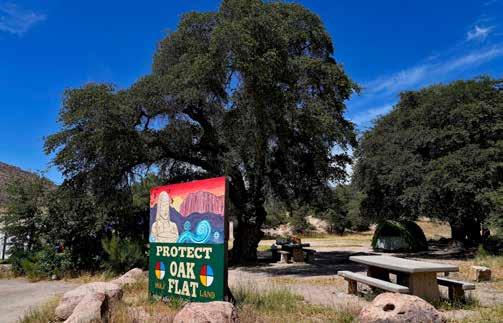
since 2005, back when the firm had only a handful of attorneys. “Protecting religious freedom means protecting people’s ability to go out in public and say what they believe and act on it.”
This ability to live one’s faith in public has become more challenging amid the overall decline of religious commitment in the country. According to Pew Research Center, Christians believe that life in the U.S. has gotten harder for people of strong religious faith. This tension is the backdrop for why religious freedom initiatives have been criticized as a mere political tool and a smokescreen for Christian conservatives to preserve discriminatory practices against minority groups.
But Becket, a small nonprofit law firm in the heart of D.C., has been expanding the way that Americans view religious liberty and shaping the law that will influence legal decisions for years to come.
Even though Becket’s Christian cases have made headlines, the firm’s work spans a gamut of faiths: a Muslim inmate who was denied the right to grow a half-inch religious beard, a Jewish university in a clash with an LGBTQ student group, a fight on behalf of the Sikhs in the military to keep their religious beard and wear a turban during training. Becket even defended a Texas priest who wanted to sacrifice animals in his garage to comply with his Santeria faith, an Afro Caribbean religion.
The attorneys tell me they’re not interested in culture wars or partisan shouting matches: The group is committed to defending free exercise of religion for all faiths by winning precedent-making cases that have the potential to shape robust religious freedom laws. “We’re doing a sophisticated, long-term game of trying to get the law right in this country,” said Mark Rienzi, Becket’s president and CEO. “I want our country to be in a place where our people and our institutions recognize and are OK with the fact that disagreement is a consequence of freedom and it’s okay for us to disagree about important things.”
IN 1992, KEVIN “Seamus” Hasson burned fervently with this conviction. Irish Catholic with a gentle demeanor and deadpan sense of humor, Hasson had been working at a D.C. law firm, but harbored a dream since law school to start a law firm dedicated to religious liberty. After visiting St. Peter’s Basilica in Rome, he walked to a pay phone across the street and called his wife, Mary, back home in the United States. “Sweetheart, I just decided what we’re going to do,” Hasson recounted in a speech in 2015. “I’m supposed to start a public interest law firm that defends all believers for free.”
Hasson described himself as “the kid in the gospels with five loaves and two fishes,” who did what needed to be done. “Religious liberty was facing a grave threat … and I had something I could do about it,” I thought, “and I knew some people who could help,” Hasson said at the Becket gala in 2012, where he was awarded Becket’s annual Canterbury Medal (he stepped down from Becket in 2011 due to Parkinson’s disease).
He named the firm after the archbishop of England Thomas Becket, who was martyred for refusing to allow King Henry II to interfere with the church. Hasson rented a small office in Dupont Circle in Washington, D.C., with the door that banged against his desk when you opened it. Then he began hiring cream-of-the-crop lawyers, who combined top-notch legal training with passion for religious liberty.
The firm entered a new chapter when William Mumma, a Wall Street businessman, stepped in as a full-time volunteer CEO in 2011. “Some people say that Seamus was our George Washington and Bill Mumma was our Alexander Hamilton,” said Eric Baxter, vice president and senior counsel at Becket. Baxter described to me a goosebump-inducing Becket fundraiser he attended at the Four Seasons Hotel in Georgetown in 2010 with a gospel choir emerging from the back, and speeches by Robert George, an American legal scholar who teaches at Princeton, and Mary Ann Glendon, a Catholic religious freedom
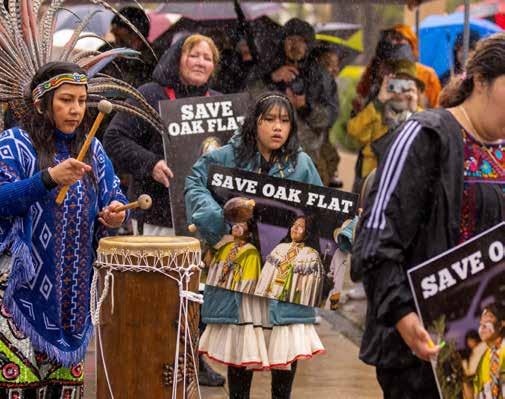
advocate. Baxter, who was working at now-ArentFox Schiff, a white-shoe law firm with about 680 lawyers today, got fired up about Becket’s mission. He started helping out with the firm’s amicus briefs — he drafted one on a religious homeless shelter that provided rehabilitation services to people trying to reintegrate into society after prison, and took a job at Becket in 2011.
Baxter recalled the new continuity and business acumen Mumma brought to Becket. “We moved from a kind of a little bit of an obscure, but powerful shop to a more public presence with even more ability to influence both the culture and the law.”
On a gray wall in Becket’s office in D.C.’s Foggy Bottom area hangs a painting of Thomas Becket, his hand reaching upward toward an angel as the king’s knight is puncturing his stomach with a sword. The office interior is accented with blue, gold and white; colors of the Blessed Virgin Mother Mary that Hasson had chosen for the office. In a series of black-and-white pictures in the conference room, Hasson poses with the Dalai Lama, Elie Wiesel and Pope John Paul. Another wall is lined with court sketches from each one of Becket’s Supreme Court victories.
The firm is small by design and is selective about the cases that it takes on — typically appellate-level and trial-court cases with potential to make a significant mark in the courts. “We’re not trying to catch every religious liberty case that’s out there,” said Windham. “We want to go in and bring the cases that are going to have a big impact and move the law in a good direction.”
TO HELP THE judges see how crucial Oak Flat was to the Apache, Goodrich drove home the point that seemed to him a no-brainer: A complete destruction of Oak Flat would most definitely inflict substantial burden on the Apache religion. “Oak Flat is the center of core religious practices that can’t be relocated,” Goodrich told the press after the 9th Circuit Court of Appeals hearing in California. On his chest, he wore a yellow Native American medicine pouch. But the
government claimed that under previous cases Navajo Nation v. U.S. Forest Service and Lyng v. Northwest Indian Cemetery Protective Association, the destruction of Oak Flat didn’t fit within RFRA’s narrow definitions of “substantial burden” on religious exercise, which those cases defined as penalties or missed government benefits.
If a mine threatened a Christian cathedral, the government would most certainly halt the destruction, Goodrich told the crowd. “But this is a very unfortunate aspect of our nation’s history, that the government has repeatedly destroyed Apache lives and lands particularly for the sake of mining interests. We think that history should not repeat itself.”
Josh McDaniel from Harvard Law School’s Religious Freedom Clinic, which had filed an amicus brief in support of the Apache Stronghold case, said that Becket’s work is important for advancing a more expansive interpretation of RFRA that also includes minority groups, like the Apache. “Becket has helped to give a voice to the Apache people in the fight for a more robust interpretation of RFRA that would extend a lot of protection to a religious group that does not have … the mainstream conception of a church,” said McDaniel. Becket has helped shape Harvard’s clinic, as well as others within other top law schools like Stanford, Yale and Notre Dame.
has increasingly been exploited and misused in order to favor the interests of select, privileged conservative Protestant Christians over the basic rights of the most vulnerable Americans.” In April 2023, House and Senate civil rights leaders reintroduced the Do No Harm Act, arguing that it would restore RFRA to its original purpose of protecting religious exercise without eroding civil rights protections.
Rienzi tells me he doesn’t discount the pain that comes with disagreement around the deeply held beliefs and values. “But we shouldn’t consider it an affront that our neighbor has a different belief about something really important, whether it’s God, or sex or politics,” he told me. “This is what it means to be free that my neighbor is allowed to think that.”
“OUR DIRECT CONNECTION TO GOD IS HERE, IT’S WHERE WE LISTEN TO THE CREATOR. OAK FLAT IS CRUCIAL FOR OUR SURVIVAL.”
In an effort to create safeguards for religious freedom protections on a state level, 23 states — most recently West Virginia and North Dakota — have codified the federal Religious Freedom Restoration Act into state law. In the debate over clashing rights and the government’s attempts to uphold equal rights and defend religious liberty, Becket is trying to “level the playing field in court,” as their website says, for people of religious belief.
Becket began its work at a time of wide bipartisan support for RFRA, which was signed into law in 1993, aiming to reverse the Smith case, in which two native Americans were fired and denied unemployment benefits after ingesting peyote at a religious ceremony. But with the growing polarization along gender-identity issues and abortion laws, support for religious liberty has been receding. In a report for the Center for American Progress, Emily London and Maggie Siddiqi wrote that “religious liberty
People on both sides of the aisle take issue with religious freedom when it doesn’t align with their worldview, Goodrich explained. “Folks of a more progressive political orientation often view religious freedom as a threat to other things they value, like often it’s LGBTQ rights or abortion rights,” he said. “Those who are more conservative leaning might be quick to claim religious liberty for Hobby Lobby and Little Sisters of the Poor, but aren’t always standing up the way they should for the Apaches.”
Thomas Berg, professor at the School of Law at the University of St. Thomas, told me that Becket uniquely positions itself within a polarizing landscape. “Some of
the other nonprofit organizations besides Becket tend to be on one side of the culture wars or the other,” Berg told me. He is the author of “Religious Liberty in a Polarized Age.” “If religious freedom is going to be meaningful, it should only be limited when the harms are serious and unavoidable,” Berg said. “And often there are ways to accommodate and protect freedoms while minimizing the effects on others.”
The research conducted by Becket this year shows that maybe the idea of religious liberty is not as controversial as it’s purported to be. In Becket’s Index report published in January, 62 percent of participants said they agree with the current protections safeguarded by RFRA — 12 percent thought that RFRA went too far. “I think that the live and let live idea is actually alive and well in America,” Rienzi said. “It gets drowned out by the screechiest yellers.” To build up strong religious freedom laws, it’s important that people have the correct perception that religious liberty is for everyone, Berg said. “And Becket’s record in protecting non-Christian and non-conservative faiths … is really strong,” he said.
Rienzi sees the pushback Becket receives as an avenue for strengthening the legal foundation for religious freedom. “It actually creates good opportunities for what we do — which is making good law,” Rienzi said. Winning consistently and “strongly enough” is a path to an endgame, he said, where religious freedom is so entwined in our society’s fabric that Becket has no cases to take on. “In a very polarized time, I think religious liberty can actually lead us a little bit to how to live in peace despite all the disagreements,” Rienzi said.
ON A RECENT morning, Vanessa and her father, Wendsler Nosie, led a group made up of the Nosie family, Christian supporters and activists on a hike to Apache Leap, a part of Oak Flat, where, in the 1880s, a group of Apache warriors chose to jump to their death instead of surrendering to the U.S. cavalry. For the Apache, the hike is a spiritual communion with the rich terrain of the sacred
land. Along a steep, bouldery path up the mountain, flower stalks of yucca plants, sacred in Apache faith, shoot up in the air. Some are beaten to the ground, scorched by the wildfires. A group of men sang Apache spiritual songs, the thunder of their water drums echoing through the valley.
Wendsler Nosie, a former chairman of the San Carlos Apache Tribe of the Apache Stronghold, has worked with a lot of attorneys. Goodrich’s approach was different, he told me by the campfire at Oak Flat. “Luke told me, ‘Don’t worry, Wendsler, you will lead the fight,’” Wendsler explained. “He puts me on the witness stand and that’s a big difference.” Goodrich acknowledges that Becket has only joined the latest chapter in the fight for Oak Flat that spans centuries. “There is a whole history of trauma that the government has inflicted here. You can’t really understand the latest chapter if you’re not familiar with the first seven-eighths of the book.”
Having an attorney who shares her most personal and important beliefs has been important to Kitty Burke, who along with her husband, Mike, were denied a foster child by the Massachusetts Department of Children and Families because of concerns about their views on traditional marriage and how they may impact their child should they come out as gay. “Getting a phone call saying, ‘Oh nope, you guys are no good, we
“PROTECTING RELIGIOUS FREEDOM MEANS PROTECTING PEOPLE’S ABILITY TO GO OUT IN PUBLIC AND SAY WHAT THEY BELIEVE AND ACT ON IT.”
understand the legal side, but has been there to support us, has been absolutely priceless,” said Burke. Baxter told me they take on clients “for life,” even after the representation is over, fostering a community of support.
AT THE PEAK of the Apache Leap, a vista speckled with shrubs opens up, blue hills on the horizon silhouetted against hazy grayish sky. The wind whooshed, as men and women kneeled and offered blessings to the sacred crosses symbolic of the connection between the Creator and Mother Earth positioned against a stone wall. “This is a holy place, this is where our deities and angels live — this is what we were vacated from to not be here anymore, to destroy our religion,” Wendsler told the hikers. “But we made our way back.”
Resolution Copper, which would expand on the existing Magma Copper Mine, promises new jobs and clean energy from copper, but would also cause disastrous environmental harm, the Nosie family says. The mine will use the underground block cave mining method and would carry the pipelines with mine waste through nearly 20 miles of rugged territory to the pristine Dripping Springs Valley. The mine would also significantly deplete groundwater ecosystems from the surrounding area and destroy native species. But Rio Tinto has vowed to minimize environmental effects and closely monitor water usage.
don’t want you’ was shocking,” said Burke. She got a tip to turn to Becket and has been working with Windham to make the case that they would be loving parents no matter what, especially amid Massachusetts’ severe foster care crisis. “To have a group like Becket in our corner who not only
“The information collected and the two-way dialogue with Native American tribes and communities has significantly reshaped the project,” according to a statement from Rio Tinto, Resolution Copper’s parent company. “Resolution Copper has agreed to forego portions of the ore body and major facilities have been completely relocated to avoid dozens of areas of cultural significance and hundreds of ancestral sites, medicinal plants, seeps and springs.” The company said it would preserve Apache Leap and the Oak Flat campground, which “will remain open and accessible for decades and may never be impacted,”

according to the statement. As required by law, Resolution Copper said it will closely monitor groundwater and surface water usage and promises to recycle 70 percent of water used by the mine. But to the Apaches, the mine would change Oak Flat forever, impacting their spiritual practices and their way of life.
Vanessa’s oldest daughter, Naelyn Pike, told me taking away the Apache roots and the spiritual connection to the land is a kind of killing of her people. “It’s a reminder that our religion as Native People is not seen by the government,” she said. “They’ll have to be accountable to our people for everything they did to us in the past.”
ON MARCH 1, a divided 9th Circuit Court of Appeals ruled 6-5 to allow the federal land transfer that will let Resolution Copper begin construction. In the decision, the majority didn’t dispute that the mine will prevent the Apaches from exercising an essential part of their religion. But relying on past cases involving Native American land, the court ruled that preventing religious exercise on federal land like Oak Flat didn’t fall under
the legal definition of substantial burden.
“It’s certainly disappointing when the court fails to protect religious liberty and fails to give Native Americans the same protection that everybody else has,” Goodrich said. “This ruling carves out an exception from the broad principle of religious freedom and from the Religious Freedom Restoration Act that specifically disadvantages Native Americans when they seek to exercise their religion on what is now federal land.”
The dissenting five judges wrote that the majority “tragically errs” in rejecting the protection of the Apaches and “categorically preventing the Western Apaches from ever again communing with Usen (the Creator) and the Ga’an (a sacred mountain spirit), the very foundation of the Apache religion.” The question of whether the obliteration of the site would inflict substantial burden on the religious exercise of the Western Apaches is straightforward. “Under any ordinary understanding of the English language, the answer must be yes,” Chief Judge Mary Murguia wrote in her dissent.
Vanessa, who works as an archeology aide for the San Carlos Apache tribe, was
LEFT: RESOLUTION MINING COMPANY SPOKESMAN TYSON NANSEL SHOWS THE LOCATIONS OF THE PROPOSED NEW MINING SITE AND OAK FLAT CAMPGROUND, IN MIAMI, ARIZONA.
BELOW: SOLEIL DAVIGNON PICKS BERRIES FOR HER COMING OF AGE CEREMONY ON OAK FLAT CAMPGROUND.
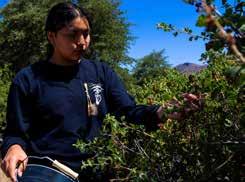
in Flagstaff, Arizona, for a meeting with the National Park Service on March 1. After the meeting, she got a call from Wendsler about the ruling. “When we heard the outcome, it was disappointing — there was a moment where I wanted to cry,” she told me. She thought about her kids. “What does the future hold for them?” she said. Her older daughters have picked up the fight, but would Shá’yú even remember her time at Oak Flat when she’s older? “To exclude us from our religious rights — that doesn’t make sense, why are we any different?”
But the fight doesn’t stop with the recent ruling, Vanessa said, and that brings her hope. Goodrich and the Nosie family plans to appeal to the U.S. Supreme Court and he believes the court will take the case. “The Supreme Court has a strong track record of protecting religious freedom for people of other faiths,” Goodrich said, “and we fully expect the court to uphold that same freedom for Native Americans.” After all, it’s not just about the Apache religion and Oak Flat. “The bigger fight here is that if my religion is at stake,” Vanessa said, “so is everybody else’s.”
This year marks the 99th anniversary of the (in)famous Scopes Monkey Trial. In early 1925, the Tennessee Legislature passed a law prohibiting the teaching of any theory in public schools that contradicted the biblical account of human origins. The new law soon stirred controversy. The ACLU ran an ad looking for someone who would deliberately break the law. John Scopes, a young football coach and substitute teacher, was pushed by Dayton, Tennessee, leaders to volunteer. (One of the many ironies of the whole ordeal was that Scopes privately expressed uncertainty as to whether he had ever actually taught evolution.) His indictment jump-started what would later be called the “Trial of the Century.”
As the courtroom drama unfolded in the sweltering heat of July 1925, one young high school student testified under oath: “I believe in part of evolution, but I don’t believe about the monkey business.”
As the trial drew to a close, defense attorney Clarence Darrow made the highly unusual move of calling the prosecutor, William Jennings Bryan, to testify as a biblical expert. Bryan, a well-known politician and three-time presidential candidate, was happy to oblige, confident in his ability to defend his faith even under oath. He viewed
the trial — as did many — as a broader argument of science versus religion.
The examination of Bryan resulted in a painful legal renunciation of biblical literalism. From a purely intellectual standpoint, Darrow clearly bested Bryan. But he did so in a way that was mean-spirited, and the immediate media response suggested that most of the public sympathized with Bryan.
FROM SUBSEQUENT STUDY AND REFLECTION, I CAME TO CONCLUDE FOR MYSELF THAT EVOLUTION DID NOT POSE THE CHALLENGES TO ORTHODOX RELIGION THAT I ONCE ASSUMED IT DID.
After 11 days of tense courtroom proceedings, a guilty verdict was returned. The jurors deliberated for only nine minutes (most of this time was used simply to leave and reenter the crowded courtroom). Scopes was convicted and fined $100. Bryan and the prosecution had won the trial but were humiliated in the process.
Within a week of the trial’s conclusion, Bryan unexpectedly died in his sleep. H.L. Mencken, writing for the Baltimore Sun, quipped: “God aimed at Darrow, missed, and hit Bryan instead.” Inscribed on Bryan’s headstone: “He kept the faith.”
PERHAPS MORE THAN any other time in Western history, the Scopes Monkey Trial has epitomized the tension between science and religion. Many have compartmentalized how we view the world into two main categories: a scientific worldview and a religious one. When we ask ourselves how and why things behave the way they do, we invariably turn to science. When we search for answers to the deep questions of the soul, most find that science as yet provides no satisfying answers.
This tension was thrown into stark relief in a very personal way for me. As a medical student at Johns Hopkins, I was deeply troubled by the apparent contradiction between evolution and what I had been taught in Sunday School about human nature and origins.
I remember studying, reading, reflecting and praying with great earnestness to know what was true and to be reminded of what I thought I had once believed. I still have many questions. But what I’ve learned since
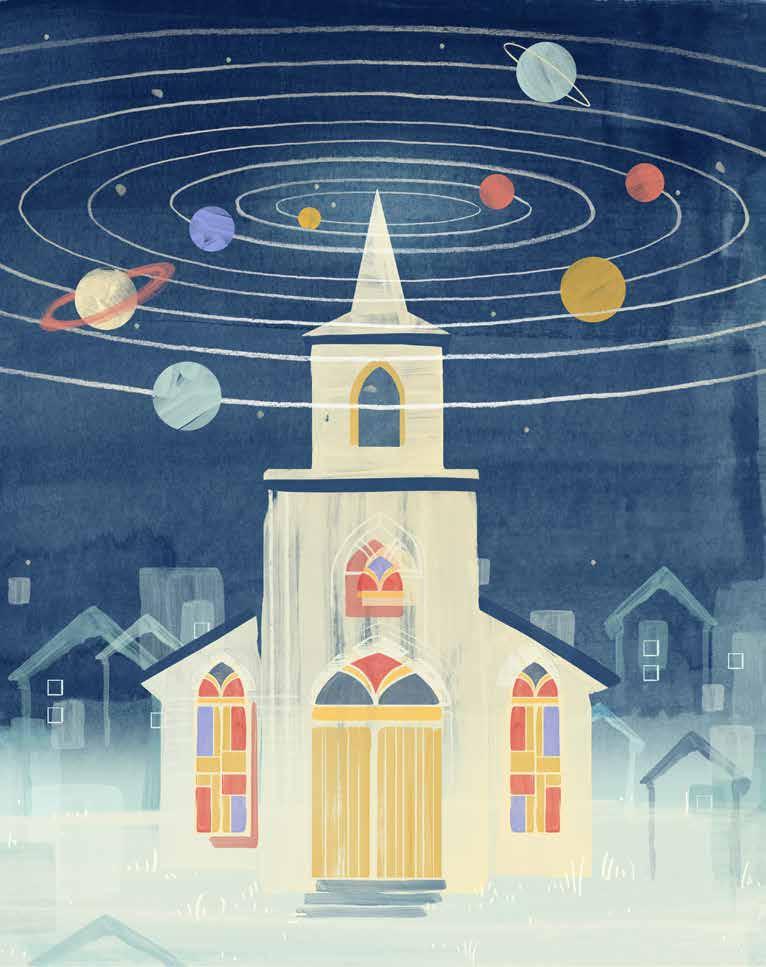
that time has been incredibly satisfying, both from a spiritual and an intellectual perspective. From subsequent study and reflection, I came to conclude for myself that evolution did not pose the challenges to orthodox religion that I once assumed it did.
So, here’s my best attempt to explain how, at least from my perspective, not only are evolution and traditional religious claims not in conflict, but that the way evolution has shaped our nature reflects the purpose and meaning of our existence.
INITIALLY, THERE WERE two key dilemmas from evolutionary theory that I struggled to understand. The first is what might be called the doctrine of randomness. If evolution, as is commonly perceived, was a random and haphazard process, then it would follow that we are merely intricate molecular accidents. This view of evolution seemingly obliterates any sense of universal purpose and is hard to square with a God who intentionally created us.
But as I studied the data, I realized that a huge amount of evidence points to evolution as a process that was not random. This line of argument comes from the way that so many creatures developed the same structures independently. For instance, birds, bats and butterflies all have wings and the capacity for flight. But biologists tell us that, through the long course of evolution, each of these creatures developed wings independently.
Remarkably similar body forms have also evolved separately. Sharks and dolphins look very much alike — they each have streamlined bodies, dorsal and pectoral fins, and countershading that makes them more difficult to detect (dark on top and light on the bottom). Yet the dolphin is a mammal with a skeleton of bone; the shark is a fish with a skeleton of cartilage. Biologists tell us that the ancestors of dolphins were land-dwelling and somehow returned to the water; the ancestors of sharks never left the water. Each evolved an eerily similar body form independently to solve the problem of how to swim fast.
Another extraordinary example of this phenomenon is the eye. Our eyes have several remarkable features: a transparent outer cover that can refract light, a lens with the ability to focus light, a diaphragm that contracts or dilates to adjust to the ambient level of brightness, and muscles that move in precise harmony with those of the other eye and adjust instantaneously to the fine tunings of the gyroscope of the inner ear. Human eyes are astonishingly similar to those of the squid. Yet, we each developed these remarkable structures independently. Altogether, biologists tell us that eyes in some form evolved over 40 times. Was this really an accident?
Lest the skeptic think I am cherry-picking the best examples, it turns out that pretty much everything in biology has followed this pat-
GIVEN
LAWS BY WHICH THE UNIVERSE IS GOVERNED, LIFE AS WE KNOW IT MAY WELL HAVE BEEN INEVITABLE.
tern. Simon Conway Morris, a preeminent evolutionary biologist at the University of Cambridge, has remarked on this phenomenon: “I can’t think of anything which has evolved only once — or very, very few exceptions.” Even Richard Dawkins, our generation’s most outspoken atheist, recognizes that there are patterns in nature pointing to a nonrandom view of evolution. Dawkins once made this point by challenging a colleague at Oxford to name some biological features which had evolved only once. His colleague could only think of a few. Roger Thomas and Wolf-Ernst Reif phrased it this way: “While chance plays a preeminent role in setting the course of evolution, it contributes much less to the determination of its outcome.” Given the natural laws by which the universe is governed, life as we know it may well have been inevitable.
A huge amount of literature in evolutionary biology reveals higher-order principles have guided evolution to go in certain directions and to produce the same forms over and over again. There’s a lot we still don’t understand about this, and it’s important to note that the nonrandomness of evolution doesn’t definitively reconcile the theory of evolution with a belief in God and a higher purpose to our existence. But it does bring these two worldviews closer together. For me at least, it’s much easier and more satisfying to imagine a God who shaped and guided evolution through higher-order principles than a God who left the creation entirely up to chance.
IF THERE IS a universal purpose to our existence and science can offer any framework to help us deduce what it is, we need to delve into what we know about how evolution shaped human nature. This brings us to the second dilemma with which I once struggled, which is what evolution implies about humanity. In the minds of so many people, if we are really the products of evolution, then this implies that at our core we’re greedy, aggressive and self-serving.
Given the principle of natural selection (survival of the fittest), it’s easy to understand why people would assume that evolution emphasizes the darker propensities of humanity. It became advantageous for the developing human (or hominin) to hoard resources. If he wasn’t selfish enough, he risked starvation and death, while a more selfish hominin survived and propagated the trait of selfishness. Aggression can be treated in a similar manner; the evolving hominin who was too weak or passive to defend himself perished, while a more aggressive peer survived. And so we could continue with many of the negative dispositions of human nature; greed, jealousy, disloyalty, arrogance, thievery and sexual promiscuity all have their origins in the operation of natural selection. An account in the late 1800s — now thought to be apocryphal but wonderfully expressive of the sentiment felt by many — tells of a woman who,
upon first hearing of the theory of evolution and its implications, exclaimed: “My dear, let us hope it is not true; but, if it is true, let us hope it will not become widely known!”
Yet over time, scientists have realized that human nature is complex. For example, even before they are able to communicate verbally, infants show a remarkable tendency to help others in need. Dozens of experiments show not only that humans are remarkably altruistic, but that we find altruism rewarding. In an experiment with children as young as 22 months, those who gave away candy were happier than those who received candy. But where does this propensity for altruism come from? How does evolution create beings who are prone to give, even to the point of self-sacrifice in extreme circumstances?
It’s complicated. But there are several evolutionary mechanisms that have pushed and pulled us in different directions. As a result, selfishness, aggression, cruelty and sexual promiscuity are unfortunate parts of human nature. But so too are altruism, cooperation, kindness and the capacity for monogamy. This is what I call the dual potential of human nature. When we combine this framework of human nature with the empirical observation that we possess free will, the purpose of our existence comes into focus with remarkable clarity. This purpose is to choose between selfishness and altruism, between aggression and cooperation, between love and hate, between promiscuity and committed pair-bonding. A fundamental purpose of our existence is to choose between the good and evil inherent within each of us. Life is a test. This is a truth, as old as history it seems, that has been espoused by so many of the world’s religions. From a certain perspective, these aspects of human nature — including how evolution shaped us — are evidence for the existence of a God, not against it.
There are several fascinating implications of how evolution has shaped our nature that are worth further consideration. One important example has to do with relationships and happiness. There is a growing
consensus in the psychological community that, more than any other factor, strong relationships drive happiness and well-being. Professor Martin Seligman, the founder of the field of positive psychology, puts it this way in his book “Flourish”:
“When was the last time you laughed uproariously? The last time you felt indescribable joy? The last time you sensed profound meaning and purpose? The last time you felt enormously proud of an accomplishment? Even without knowing the particulars of these high points in your life, I know their form: All of them took place around other people. Other people are the best antidote to the downs of life and the single most reliable up.”
So where does the rewarding and satisfaction-inducing characteristic of relationships come from? I argue that, at least on some level, it must come from our evolution. In part, it’s most likely an extension of the necessarily deep and loving relationships that human parents have had to develop with their young children to ensure their survival. It’s also surely because strong social connections have always served us so well. Our ancestors likely faced a range of unpredictable challenges. Rapidly changing weather, injury and attacks from wild animals all made life extremely dangerous. Those groups and families that formed strong social connections were more likely to survive. As a consequence, deep relationships became extremely rewarding.
In sum, a great body of evidence demonstrates that relationships are the most important factor in our happiness and well-being. If evolution is responsible for this, then the closest of our relationships — our family — should have the most bearing, for better or worse, on our mental health and happiness. This is the way we have been psychologically and evolutionarily engineered. This is the way we were created.
SELFISHNESS, AGGRESSION, CRUELTY AND SEXUAL PROMISCUITY ARE PARTS OF HUMAN NATURE. BUT SO TOO ARE ALTRUISM, COOPERATION, KINDNESS AND THE CAPACITY FOR MONOGAMY.
For centuries, a diverse and evolving mix of culture, food, faith, art and political opinions has been a constant characteristic of American society. As commentator David Brooks observed, “We are trying to do something that has never been done before … we are trying to build the first mass multicultural democracy.” Yet, amid that difference and diversity, we appear to be having an increasingly difficult time achieving social harmony through mutual respect and dignity. And that struggle is particularly apparent for religious pluralism in one of our core American institutions: higher education.
If the public didn’t know before about the depth and breadth of antisemitism in America, the troubling scenes on college campuses since the October 7 Hamas attacks and Israel’s response have been eye-opening. The Anti-Defamation League reports that 73 percent of Jewish students have experienced or witnessed harassment this school year. Public shock over this situation was exacerbated in early December when the presidents of Harvard, Penn and MIT failed to definitively declare before a congressional panel that “calling for the
genocide of Jews” constitutes bullying and harassment on their campuses.
Unfortunately, antisemitism is not the only form of religious bigotry at American universities and in the broader populace. Prior to October 7, over half of Muslim students reported experiencing negative comments about Islam from peers and more than a
“RELIGION IS NOT LIKE A COAT AND HAT THAT ONE PUTS ON AND TAKES OFF — IT SEEPS INTO PEOPLE’S LIVES, LEAVING AN INDELIBLE MARK ON THEIR ATTITUDES AND BEHAVIORS.”
third were subjected to such comments by professors. Since the Hamas attacks, the Council on American-Islamic Relations has found a 216 percent increase in reports of anti-Muslim bias. Beyond antisemitism and Islamophobia, surveys show that nearly half of Protestant Christians and over one-third of Hindus feel unsafe expressing their
worldviews on campus. Clearly, despite an abundance of religious diversity in America and a rich heritage of religion influencing higher education, anti-religious attitudes are prevailing on our college campuses and in our larger social dialogue.
Ironically, as many university environments have grown more hostile to faith and religion, initiatives around diversity, equity and inclusion, or DEI, have become more influential, especially since the intense period of racial reckoning in the summer of 2020. The basic intent of diversity and inclusion initiatives is noble: to end discrimination and create climates where students of all backgrounds can thrive. Nevertheless, DEI has met significant public backlash for promoting policies and practices that introduce new forms of discrimination and advance radical agendas of separatism and tribalism. As a result, state lawmakers have proposed or passed bills to scale back DEI at public universities to the point that it could soon be on life support. Some have advocated for pulling the plug altogether, like Elon Musk, who posted on X.com that “DEI must DIE.”
It’s hard not to agree with the concerns of lawmakers and citizens over flawed

DEI initiatives. Unfortunately, the oppressor-victim framework guiding recent diversity efforts has not only created broad resentment, but, paradoxically, has made it more difficult for higher education institutions and the society they serve to achieve the supposedly unifying objectives of DEI
However, as we look to the future, we also reject the false dichotomy of either keeping DEI as-is or leveling it to the ground. In our view, the quest for inclusion in our increasingly diverse world should begin in and be a vital function of higher education. Yet, diversity and inclusion initiatives clearly need a renovation, starting at the foundation. To begin, we need to move away from the zero-sum perspective of oppressors and victims and move toward a loftier and more nuanced framework of pluralism. In doing so, diversity efforts must also focus on promoting the inclusion of all people rather than having a singular focus on only certain identities.
THIS IS WHERE religious inclusion comes into the picture. The recent examples of antisemitism and Islamophobia on campuses have exposed a giant weakness in DEI efforts: a stubborn refusal to meaningfully engage with faith. In higher education, a recent study shows that most universities do little to accommodate, let alone legitimize and empower, individual religious expression. However, there have always been good reasons for making religious inclusion part and parcel with diversity initiatives. As one scholar observed, “religion is not like a coat and hat that one puts on and takes off — it seeps into people’s lives, leaving an indelible mark on their attitudes and behaviors.” In fact, for some students, learning is seen as a divine mission and religious endeavor, even when the subject is secular. Furthermore, some university faculty and administrators, including us, felt a spiritual call to serve in the academy. Thus, ignoring religion is tantamount to discounting individual identity, which flies in the face of every conceivable diversity and inclusion goal.
To be clear, by calling for more religious
inclusion in American higher education, we are not making a call for more identity-based separatism — there is already more than enough of that in our society. Rather, we are calling for an acknowledgement of faith as a core element of the human experience that, if not legitimized by our institutions of higher learning, will result in even greater exclusion and discrimination — the very things diversity and inclusion initiatives attempt to eliminate. Indeed, religious pluralism not only prepares students to be future leaders in a diverse and globally connected world, but it enables them to build skills in listening and civility — much-needed skills in today’s diverse communities and workforces.
Why, then, have universities, as a reflection of broader society, overlooked religion as an element of relevant diversity? We do
THE STRUGGLE FOR HARMONY IS PARTICULARLY APPARENT ON THE ISSUE OF RELIGIOUS PLURALISM IN ONE OF OUR CORE AMERICAN INSTITUTIONS: HIGHER EDUCATION.
not pretend to know all the reasons, and our purpose is not to dissect those reasons. Rather, our point is that religious inclusion can be the start of a much-needed DEI renovation based on a pluralist philosophy and an overarching goal of inclusion for all people. Furthermore, even though religious inclusion should have always been part of diversity initiatives and perspectives, we argue that it may even be the key to saving and restoring their original intent of bringing greater harmony and understanding to our social and civic engagement. Here is why:
First, religious inclusion can help a wider swath of people to see themselves as beneficiaries of diversity work, including its most vocal critics. For example, a pair of surveys by Pew Research Center show
that while only 30 percent of Republicans (versus 78 percent of Democrats) think DEI is a good thing, religion and spirituality are overwhelmingly more important to Republicans. Moreover, as noted earlier, conservative Christian groups generally feel unsafe expressing their worldviews in public settings, including college campuses. What would happen if due to religious inclusion efforts, conservative religionists believed that their worldviews could be safely expressed in both private and public forums? We predict that rather than feeling like victims of diversity initiatives, they could become allies of diversity and inclusion because they would feel both included in and protected by such efforts. This is one reason why research in corporate settings shows that when religion is valued as much as any other element of diversity, it is often the rising tide that lifts all boats. In other words, when institutions, including universities, create faith-friendly environments, they widen the scope of inclusion and end up benefiting people of all backgrounds and identities, not just those of religious faith.
Second, there is a history of religion championing social justice and human dignity, which inform diversity and inclusion efforts. For example, historian Taylor Branch observed that the Rev. Martin Luther King Jr. “fused the political promise of equal votes with the spiritual doctrine of equal souls.” In contrast, recent DEI-related efforts have largely been removed from religion in favor of secular rhetoric and frameworks, even though all major religious traditions hold beliefs about loving all people and caring for marginalized groups. This is validated by dozens of studies showing that religiously involved individuals give far more time and money to charity organizations, including secular charities. As such, religionists have more in common with secularist champions of diversity and inclusion — particularly in serving the underprivileged — than either group may think. This realization should spur institutional leaders to see faith and
religion as allies of diversity and inclusion rather than obstacles.
Third, given religion’s history of promoting human rights, universities and other social institutions can borrow from religion’s playbook for affecting change. For example, the Rev. King not only saw the need for social justice through a religious prism, but he also adopted a peacemaking approach toward achieving that goal that was directly tied to his Christian faith. Fortunately, peacemaking is a part of most major religions’ teachings and beliefs. This is not to suggest that people of faith have always lived up to this ideal — history certainly suggests otherwise — but as demonstrated by the Rev. King, Mahatma Gandhi and others, the probability of ending discrimination and fostering belonging improves significantly when those advocating for change do so through peaceful rather than divisive means. This is one reason why in our own faith tradition, members of The Church of Jesus Christ of Latter-day Saints have been implored by President Russell M. Nelson to “abandon attitudes of prejudice against any group of God’s children” while managing “honest differences of opinion with mutual respect and dignified dialogue,” with the goal “to be ... peacemaker(s) now and always.” In that sense, it is possible for the best parts of diversity, inclusion and religion to come together in unity to reshape our vital social institutions, including higher education, into bastions of civility, dialogue and belonging.
Fourth, many religious groups in America, such as Muslims, Catholics and Latter-day Saints (to name just a few) have a history of experiencing political and social oppression, which puts them in a unique position to champion diversity and inclusion efforts. This is not because the experiences of these groups always match or even rival those of other marginalized groups. Rather, it is because these groups can empathize with historically marginalized groups, and empathy is the beginning of allyship. Empathy can also motivate groups that have been in conflict to partner in advocating
for one another. For example, during the Israel-Hamas conflict, Jewish and Muslim groups have partnered to jointly combat antisemitism and Islamophobia. Our own faith tradition has worked to heal wounds with the LGBTQ community by promoting laws that strengthen the rights of same-sex couples while protecting religious freedom.
Finally, religion has large numbers of people who can amplify the message of diversity and inclusion. Although religious affiliation has declined recently in the United States, nearly 50 percent of Americans still consider themselves religious. This could translate into millions of people supporting diversity and inclusion efforts from a faith-based perspective. Moreover, despite a decline in religious affiliation, religious diversity is increasing. Thus, voices of sup-
WE PREDICT THAT CONSERVATIVE RELIGIONISTS COULD BECOME ALLIES OF DIVERSITY AND INCLUSION BECAUSE THEY WILL FEEL BOTH INCLUDED IN AND PROTECTED BY SUCH EFFORTS.
port for inclusive practices can come not just from one faith tradition, but many. In short, there is strength in numbers as the tent of diversity is broadened to include religion, particularly with a foundation of respectful pluralism.
AS VITAL SOCIAL institutions that develop our future leaders, how should universities foster greater religious pluralism and inclusion? One approach is to enlist the help of groups such as Interfaith America, which works with universities to create respectful dialogue between religious groups as well as with nonreligious populations. Campuses can also learn from the INSPIRES Index, which tracks faith friendliness on American college campuses. Universities can
also promote scholarship around religious diversity, as the University of Michigan is doing with a recently announced multidisciplinary religious diversity research center.
Additionally, religious pluralism can also be built into curricular activities. For example, at the University of Arkansas a class is taught for business students in which religiously diverse speakers are brought in to share how they live and express their faith at work. Similarly, Brigham Young University hosts a case competition for graduate students across the country that is focused on dealing with issues of faith and belief in the workplace.
Regardless of the specific activities undertaken by university, community or civic leaders to foster religious pluralism, they should focus simultaneously on combating religious discrimination while promoting constructive and civil dialogue between religious and nonreligious groups. Once again, this ensures that the process of renovating diversity and inclusion initiatives through religious pluralism is about peacemaking, dignity and civility, not division, identity politics and coercion.
Higher education, as with broader society, is at a crossroads. In the grand American experiment of building history’s most diverse and democratic civilization, our institutions of higher learning must not only be centers of excellence, but also models of respectful pluralism and civil dialogue. Unfortunately, a lack of attention to religious inclusion at American universities has hurt their credibility in that regard among public observers and lawmakers across the political aisle. Religious pluralism will not only redeem diversity and inclusion efforts in higher education and help universities regain the public’s trust, but it will also help secure a more peaceful, dignified and hopeful world.
“
All creation is a mine, and every man, a miner.”
So begins one of the least-known speeches by Abraham Lincoln, the “Lecture on Discoveries and Inventions,” versions of which were delivered on at least six occasions between April 1858 and April 1860. We generally think of Lincoln as an American prophet, a redeemer president who freed the slaves, saved the Union and ennobled the cause of liberty with magnificent oratory. We only rarely think of him as a philosopher-statesman, a man who had enduringly relevant things to say about the hidden vulnerabilities of democratic institutions in the face of change: generational, ideological and, not least, technological.
He was. And much of his thinking on the subject was deeply rooted — as it would have been for most Americans in the 19th century in the Hebrew Bible.
NOT THAT LINCOLN saw himself as some sort of scholar. “I am not a professional lecturer,” Lincoln confessed. “Have never got up but one lecture; and that I think, a rather poor one.” What we have today of the lecture exists only in fragmentary form, lacks
a proper conclusion, is redundant in places and was probably delivered with a fair amount of extemporizing — probably the result of a writing process described by his law partner William Herndon as “noting down ideas on stray pieces of paper, which found lodgment inside his hat.”
Still, for all his engagement with pressing political and legal issues, Lincoln was repeatedly forced to reckon with questions that went beyond the merely contemporary. Was the United States founded in 1776 as a single nation with a unifying set of moral convictions, or in 1787, as a compact of states with distinct legal rights? Was the Declaration of Independence’s claim that “all men are created equal” a self-evident truth
or, as John C. Calhoun put it, a “self-evident lie”? Could a republic founded by one revolutionary generation resist the revolutionary impulse of succeeding generations to overthrow it?
Lincoln also had a lifelong fascination with science and technology. In 1849, he received a patent for a mechanism to lift boats over shoals, making him the only president in history to ever get one. A legal acquaintance from the 1850s, Charles Zane, was with Lincoln the first time the future president saw a self-raking reaping machine. “He examined it with much interest,” Zane recalled, “and then I listened to him explaining, in the fewest words but with great clearness, how power and motion were communicated to the different appliances, especially to the sickle, the revolving rake, and the reel.”
But it was as president that Lincoln had the best opportunity, and the greatest need, to explore his technological fixations fully. He corresponded with Richard Gatling, inventor of the eponymous gun, and pushed the army to adopt it. He urged the creation of the Union Army Balloon Corps and appointed Thaddeus S.C. Lowe to its

command: In June 1861, Lowe telegraphed the president, from a height of 500 feet, a message “acknowledging indebtedness to your encouragement for the opportunity of demonstrating the availability of the science of aeronautics in the service of the country.” A lawn south of the White House became an informal testing ground for new weapons, many of which Lincoln liked to try out or see for himself. “The inventors were more a source of amusement than of annoyance,” recalled John Hay, Lincoln’s personal secretary. “They were usually men of some originality of character, not infrequently carried to eccentricity. Lincoln had a quick comprehension of mechanical principles, and often detected a flaw in an invention which the contriver had overlooked.”
In all this, Lincoln was typically American: practical, curious and enthusiastic about the capacity of science and technology to improve everyday life, ease suffering and advance the common interests of mankind. But he also had doubts: Could invention itself, for all its potential benefits, sometimes pose a potentially fatal danger to the cause of human freedom?
Here is where the enduring interest of his “Lecture on Discoveries and Inventions” lies. Americans tend to think that political freedom and technological innovation are not merely complementary but also mutually reinforcing; that is, that liberalism supplies the political and economic conditions in which inventive people are most likely to flourish, and that the products of invention strengthen the foundations of liberalism by making society richer and happier. This is the blasé confidence that leads us to believe that the benefits of technological progress invariably outweigh its costs, whatever turbulence it occasionally produces.
But what if that isn’t always true — if, that is, Lincoln’s doubts are well founded? What if certain technologies transform not merely the way we produce goods and services but also how we treat other human beings, relate to our government and understand our shared rights? Can a nation that sees itself as the greatest invention of
all time — Novus ordo seclorum, “a new order of the ages” — preserve any sense of reverence for the ideas and ideals that came before it? Can a restlessly inventive people restrain their taste for the new, and thus their eagerness to discard the old, even if the new threatens the foundations of their own liberty?
LINCOLN BEGINS HIS talk by observing that invention is a defining feature of human nature: “Man is not the only animal who labors; but he is the only one who improves his workmanship.” What follows is a catalog, based on biblical references, of ancient inventions and inventors. Tubal-cain, seventh in descent from Adam, was, in the words of Genesis, “an instructor of every artificer in brass and iron.” Thread sug-
WHAT IF CERTAIN TECHNOLOGIES TRANSFORM NOT MERELY THE WAY WE PRODUCE GOODS AND SERVICES BUT ALSO HOW WE TREAT OTHER HUMAN BEINGS
gesting spinning and weaving is also mentioned in Genesis, as is the saddle. (“Abraham rose up early in the morning, and saddled his ass.”) There is a mention of a chariot “upon the occasion of Joseph being made Governor by Pharaoh,” implying the prior invention of the wheel and axle. Lincoln cites at least 24 specific passages from the Books of Moses. Other than demonstrating his deep familiarity with the Bible, there’s a hidden purpose to these references. “I think I can show, at least in a fanciful way, that all the modern inventions were known centuries ago,” he explained to Louis Agassiz in January 1865, when the great natural scientist came to the White House and asked about the lecture. Not everything that is new is necessarily better: The ancients, Lincoln is saying, weren’t our
inferiors when it came to doing the sorts of things we value most about ourselves. In important ways, they might have been much better.
The full meaning of Lincoln’s remark to Agassiz becomes clearer in the second half of the speech, which begins with such a startling turn that, until the 1990s, historians thought it constituted a completely different lecture. “We have all heard of Young America,” Lincoln says. “He is the most current youth of the age. Some think him conceited, and arrogant; but has he not reason to entertain a rather extensive opinion of himself? Is he not the inventor and owner of the present, and sole hope of the future?”
Young America was the name of a cultural, artistic and political movement, formed in the 1840s and connected to the Democratic Party, which believed that America had to make a decisive break with everything deemed old. “All history is to be re-written; political science and the whole scope of all moral truth have to be considered and illustrated in the light of the democratic principle,” wrote the magazine columnist John Louis O’Sullivan, a champion of the movement. “All old subjects of thought and all new questions arising, connected more or less directly with human existence, have to be taken up again and re-examined.”
The animating political spirit of Young America was a kind of self-confident jingoism that found expression in the policies that led to the Mexican-American War — which Lincoln had opposed on the grounds that it was both unjust and dangerous, since it opened up new lands for the expansion of slavery. Young America also believed in unfettered capitalism, including free trade, which Lincoln opposed in favor of a tariff system, and a kind of self-serving morality that disguised its greed in professions of faith in humanity. Its greatest political champion was Stephen Douglas, who defeated Lincoln in the 1858 Illinois Senate race and later lost to him in the 1860 presidential election.
“In knowledge he is particularly rich,”
Lincoln says of Young America with obvious sarcasm. “He knows all that can possibly be known; inclines to believe in spiritual rappings and is the unquestioned inventor of ‘Manifest Destiny,’” the phrase for which O’Sullivan is most famous. “His horror is for all that is old, particularly ‘Old Fogy’; and if there be any thing old which he can endure, it is only old whiskey and old tobacco.”
Now Lincoln has a bit of fun. If Young America despises Old Fogy, then how does he feel about “the first of all fogies, father Adam”? Adam, Lincoln says, was probably “ignorant, and simple in his habits.” Yet he had certain advantages over his successors. He was “a very perfect physical man.” He had “dominion over all the earth.” He is the inventor of clothing, speech and “the art of invention” itself. And even then, there is a prior inventor — that is, Adam’s own creator. Lincoln pauses to marvel at “the great activity of the tongue, in articulating sounds,” and then “the wonderful powers of the eye, in conveying ideas to the mind from writing.” No modern machine, Lincoln implies, could possibly match these.
In other words, the greatest inventor is God, a point that would not have been lost on Lincoln’s pious audiences (whom he was tacitly courting as voters). This does not mean that human beings should not invent — otherwise, God would not have endowed human beings with inventive natures. But it does suggest that invention involves a form of gratitude to the Divine, and perhaps a conviction that the way he invented us is how we should invent in turn: lovingly, humanely, ethically.
For Lincoln, the ethical invention par excellence is the printing press, because it helped liberate human potential as nothing else before it or since. “It is very probable — almost certain that the great mass of men, at that time (before the invention of the press), were utterly unconscious, that their conditions, or their minds were capable of improvement,” Lincoln says.
“They not only looked upon the educated few as superior beings; but they supposed
themselves to be naturally incapable of rising to equality. To emancipate the mind from this false and under estimate of itself, is the great task which printing came into the world to perform. It is difficult for us, now and here, to conceive how strong this slavery of the mind was; and how long it did, of necessity, take, to break its shackles, and to get a habit of freedom of thought, established.”
If the printing press is the paradigmatic good invention, what is the paradigmatic bad one? A single telling line gives away his thinking:
“I have already intimated my opinion that in the world’s history, certain inventions and discoveries occurred, of peculiar value, on account of their great efficiency in facilitating all other inventions and dis-
TECHNOLOGY IS NOT MERELY A TOOL TO BE SHAPED BY ITS USERS FOR BETTER OR WORSE. IT IS ITSELF A SHAPER THAT CAN TURN PEOPLE INTO TOOLS, WHETHER AS SLAVES OR, IN THE CASE OF SOCIAL MEDIA, “USERS.”
coveries. Of these were the arts of writing and of printing — the discovery of America, and the introduction of Patent-laws. The date of the first, as already stated, is unknown; but it certainly was as much as fifteen hundred years before the Christian era; the second — printing — came in 1436, or nearly three thousand years after the first. The others followed more rapidly — the discovery of America in 1492, and the first patent laws in 1624. Though not apposite to my present purpose, it is but justice to the fruitfulness of that period, to mention two other important events — the Lutheran Reformation in 1517, and, still earlier, the invention of negroes, or, of the present mode of using them, in 1434.”
The date appears to be a reference to the
origins of the African slave trade, initially by Portuguese slavers selling their captives to Spanish buyers. But the power of the line — the only reference to American slavery in the entire lecture — rests in its argument that the idea of “negro” as a category has nothing to do with nature and everything to do with invention; that is, that racialized slavery, if not the very idea of race, is a contrivance of relatively modern times. Invention, after all, is not just about the making of devices but also the minting of ideas and the creation of institutions — in this case, the idea of racial inferiority, and the institution of slavery to profit from it.
It would have been difficult for Lincoln to convince his listeners that nothing fundamental distinguished them from their Black servants or slaves. That’s probably why he touches on it only glancingly. But the radicalism of what he is saying should not be missed: He is arguing that concepts of race and racial superiority are, to use the argot of 21st-century academia, “social constructs.” What appeared so completely natural to a white, 19th-century American audience was, Lincoln believed, an invention of the mind — and one that, within a few years of Lincoln’s speech, would have to be violently undone.
WHAT LINCOLN CALLED “the present mode” of using Black people wasn’t just a function of ideas about race. Technology was pivotal, too. One of the surprising omissions in the “Lecture on Discoveries and Inventions” (though quite possibly because we don’t have the full text) is any reference to Eli Whitney’s cotton gin, invented in 1793, which transformed the economic incentives of the American South by making cotton plantations immensely profitable.
Even so, we know the cotton gin was very much on Lincoln’s mind. In July 1858, shortly after he first delivered his “Lecture on Discoveries and Inventions,” he gave a speech in Springfield explaining how his views about slavery had evolved over time. As a younger man, Lincoln explained, he had opposed slavery while believing it was
TECHNOLOGY IS AMONG THE MOST FUNDAMENTAL ISSUES IN ALL OF POLITICS. TO THINK OTHERWISE IS TO PERPETUATE AN ILLUSION, IF NOT A DECEPTION, THAT LEAVES US AT THE MERCY OF TECHNOLOGICAL “ADVANCES” THAT WE CAN SCARCELY CONTROL.
on a gradual course to extinction. But with the passage of the Kansas-Nebraska Act in 1854, he concluded that his hopes had “been resting in delusion.” One point of evidence was a speech given by South Carolina Congressman Preston Brooks, remembered by history as the man who caned Sen. Charles Sumner, the Massachusetts abolitionist, on the floor of the Senate. “Mr. Brooks,” Lincoln said, “what I think, that the framers of our Constitution placed the institution of slavery where the public mind rested in the hope that it was on the course of ultimate extinction. But he went on to say that the men of the present age, by their experience, have become wiser than the framers of the Constitution; and the invention of the cotton gin had made the perpetuity of slavery a necessity in this country.”
Simply put, the cotton gin gave wealthy white Southerners motives far more powerful than their moral scruples to perpetuate the institution of slavery: power, wealth, ease. The convictions that uphold a free society, which Jefferson named so memorably in the Declaration of Independence, simply collapsed in the face of those temptations. Because of the cotton gin, every political impulse in the South sought to entrench slavery; every economic instinct to expand it; and every ideological tendency to justify it. The fact that the justifications were ludicrous — “although volume upon volume is written to prove slavery a very good thing,” Lincoln scoffed in yet another speech, “we never hear of the man who wishes to take the good of it, by being a slave himself” — did almost nothing to diminish their
power. Technology and the perverse incentives it creates warp reason.
The cotton gin is a technology of the distant past. But it’s worth asking: What is our own cotton gin? What technology warps our relationship to other citizens, sows distrust in democratic institutions, atomizes the individual, polarizes politics, disseminates conspiracy theories, empowers bigots and embitters personal relationships? And — in doing all this damage — reaps immense profits for its inventors, innovators and investors?
There’s more than one answer, no doubt. But little compares to social media in its consequences for democratic norms. When Mark Zuckerberg took Facebook public in 2012, he told investors that his company would “rewire the way people spread and consume information” and “once again transform many of our core institutions and industries.” As the social psychologist Jonathan Haidt has pointed out, he was right just not in the way he thought. The algorithms of social media “encouraged dishonesty and mob dynamics,” Haidt wrote a decade later in The Atlantic. They have “magnified and weaponized the frivolous” and are “almost perfectly designed to bring out our most moralistic and least reflective selves.”
“It was just this kind of twitchy and explosive spread of anger,” Haidt adds, “that James Madison had tried to protect us from as he was drafting the U.S. Constitution.”
This isn’t the place to speculate about how much additional damage social media will do to the fabric of a free society. The central point, which Lincoln saw so clearly,
is that technology is not merely a tool to be shaped by its users for better or worse. It is itself a shaper that can turn people into tools. The idea that technology should or can be separated from politics — a central conceit of liberal-democratic ideology — is wrong: Technology is among the most fundamental issues in all of politics. To think otherwise is to perpetuate an illusion, if not a deception, that leaves us at the mercy of technological “advances” that we choose naïvely and, once they take hold, can scarcely control.
Lincoln is not asking us to resist the technological trend by becoming a society of Luddites, which would only harm the interests of a free society and its people. Nor is he insisting that we predict all the potential dangers of powerful new technologies or kill them in their infancy. He is, however, suggesting that a task of democratic statesmanship is to ask whether a new technology is likelier to lead to the emancipation of the mind than to its enslavement. And, should we answer in the negative, he suggests, we can put limits on those technologies, whether it’s through regulation or education or the deliberate cultivation of a habit of reverence for the old amid our infatuation with the new.
The core of all of Lincoln’s teachings is that democracies fail when people become careless about what it means to be human. And the test of any technology is whether it makes us more human, not less.

She can almost smell her mother’s kitchen, steamed up with peppers and brine. And the longer she stares at the recipe, the more nostalgic she feels. “Brooks Avenue Fish Stew,” it reads, lovingly titled for Lennon Flowers’ childhood home in North Carolina. Her mother never wrote this down, even though the dish was a holiday ritual, so she took the tradition with her when she died unexpectedly 12 years ago — until her family spent hours of trial and error to rebuild it as best they could. “Reconstructed from memory,” reads a parenthetical.
Later, as Flowers gathers the fresh cod, scallops, shrimp, diced tomatoes, clam juice, olive oil and seasonings that the digital recipe calls for, her mom might as well be there beside her. She can even visualize her movements, tossing diced onions into a stock pot until they hiss, cracking open shrimp shells and fussing over that last dash of red pepper flakes. Flowers adds slices of lemon to the steel pot and lets it simmer, thrilled that she can finally share this tradition. “My mom’s grandson, he
will only meet her through the stories I tell him,” she says. “And one of those stories is the reason that we make seafood stew every Christmas Eve.”
Her pain was still fresh in 2014, when Flowers co-founded a nonprofit called The Dinner Party to help those grieving the
FOOD CAN TRIGGER MEMORIES OF PAST MEALS, MEMORIES OF EATING THAT SAME FOOD ANOTHER TIME WITH OTHER PEOPLE. FOOD IS SPECIAL BECAUSE IT’S SO INTIMATE.
death of a loved one to meet over shared meals. More than 9,000 people met up through the platform last year. “The creation of a meal and a really beautiful experience becomes an entry point into talking not only about death but celebrating a life,”
she says. “What we need more than anything right now are opportunities to lower the barriers to connection. And food, precisely because of its familiarity and intimacy, is an amazing way to do that.”
Flowers, of course, is not alone. She’s not much of a recreational cook; she only intends to make her mother’s stew once a year. That’s true for most of us these days, between school and careers and our kids’ own hectic schedules. Balanced against the abundant conveniences that offer daily shortcuts to basic sustenance, that means we don’t need to spend our days in the kitchen any more, and it doesn’t always make sense. But her experience reminds us that now and then, the old ways offer more than what we need to get through the day. But why is it that a list of instructions and ingredients can impact us so deeply?
THE HUMAN IMPULSE to preserve recipes is old and at times mysterious. The earliest known examples are etched in cuneiform letters on a cracked clay tablet believed to be almost 4,000 years old, housed in the

“WHAT WE NEED MORE THAN ANYTHING RIGHT NOW ARE OPPORTUNITIES TO LOWER THE BARRIERS TO CONNECTION.”
Babylonian Collection of Yale’s Peabody Museum. The slab details 25 meals in Akkadian, a language common during the first empire of Mesopotamia. Their simple structure mirrors any modern recipe: Split the pigeon in half — add other meat. Prepare the water, add fat and salt to taste; breadcrumbs, onion, samidu, leeks and garlic (first soak the herbs in milk). When it is cooked, it is ready to serve.
Many still try to replicate these ancient meals — without measurements or cooking times — and share their findings through blog posts and video tutorials. We seem driven to share what we learn, and recipes are one medium for transmitting acquired knowledge and the wisdom of experience. Our recipes also tend to learn from our environment. “American Cookery,” the first cookbook published in the United States, mingled British and North American ingredients. Later, cookbooks offered isolated pioneers out West a kind of companionship, offering advice from meal prep to caring for the sick in the style of friends or teachers.
The practice hasn’t changed much. Americans buy about 20 million cookbooks every year. Between TikTok, YouTube and Instagram, more than 25 million posts bear the #recipe hashtag. A host of smartphone applications and websites, such as Paprika and BigOven, are devoted to storing recipes. None of which even begins to account for recipes exchanged among friends and family. Survey results published by Statista in 2021 found that 44 percent of millennials and members of Generation Z find meal inspiration in family recipes.
We don’t just share with our peers; we also share across generations. In middle America, it has long been a common practice to archive favorite recipes from loved ones who’ve passed on. This might take the shape of a typewritten, photocopied collection in a three-ring binder, a small chest of index cards organized by type of dish, or the ward cookbook that was once a tradition in Latter-day Saint congregations. In recent years, prized casseroles and other dishes have appeared in hundreds of
obituaries, a living homage to the culinary feats of the deceased.
I’m struck by the story of Constance Joan Bradbury, of Fairbanks, Alaska, where she volunteered for the local FamilySearch Center, sifting through records to help others to discover their ancestry. “Connie loved to make casseroles,” reads her obituary on Legacy.com. “In lieu of flowers, and in honor of her, make a casserole for someone you love or for someone in need.” Or Martha Kathryn Kirkham Andrews, once-president of the Cache County Chapter of the Daughters of Utah Pioneers, whose obituary describes Sunday dinners of “mashed potatoes with pot roasts and chocolate Texas sheet cake with nuts.” Her husband’s gravestone in Logan, Utah, is even engraved with her famous chocolate fudge recipe.
Meals have long been connected to death and mourning. Ancient Egyptians painted scenes of food making in tombs so the dead could have food in the afterlife. For the Day of the Dead, Mexicans leave traditional dishes like tamales and pan de muerto (a type of sweet bread) on altars for their deceased loved ones, intended to draw their spirits back to the world. Buddhists in Korea celebrate Yeongsanjae, congratulating the dead on entering heaven with a tea ceremony and a ritual meal of rice cakes and fruits. Greek Orthodox Christians still pray for and reflect on the dead by preparing koliva (a spiced dessert with wheat berries, nuts and fruit). In Judaism, visitors to those sitting shiva — seven days grieving a first-degree relative at the home of the deceased — bring round-shaped foods like bagels symbolizing the circle of life. Across the Intermountain West, burials are often followed by luncheons, where “funeral potatoes” are a popular cheesy comfort food.
So why are certain recipes such an effective way to remember our loved ones? The answer to that starts with the human relationship with food itself.
CONSIDER A SCENE from “In Search of Lost Time,” a seminal novel by 20th-century French author Marcel Proust. Marcel, the
semifictional narrator, is overcome by the taste of an ordinary madeleine — a small, seashell-shaped sponge cake — dipped in lime-flower tea. “An exquisite pleasure had invaded my senses, but individual, detached, with no suggestion of its origin,” he writes. A memory comes back to him: On Sunday mornings as a child, Marcel would greet his aunt Leonie in her bedroom, and she’d offer him a madeleine dipped in her tea. Now he could feel his aunt’s presence, even visualizing the flowers that once grew in her garden.
The olfactory nerve transmits smells and tastes directly to parts of the brain that handle our most difficult emotions. The olfactory nerve is located near the amygdala, a small, almond-shaped structure that regulates fear and imbues our memories with emotional meaning. Beside it, the seahorse-shaped hippocampus converts short- to long-term memory. Both are part of the limbic system, which is primarily tasked with our survival. No wonder olfactory memories are so powerful. Research shows that we still recognize smells 95 percent as often after a full year’s remove as we do within just 30 seconds. These memories also preserve their associations.
“Food can certainly trigger memories: memories of past meals, memories of eating that same food another time with other people,” says Paul Rozin, a professor of psychology at the University of Pennsylvania whose focus is on the role of food in human life. “Food is special because it’s so intimate. It’s so personal. It’s so bodily related. And it’s inherently social because we’re exchanging food with others all the time.”
There are also chemical elements to these relationships. About 95 percent of the body’s serotonin is produced in the gastrointestinal tract. This neurotransmitter contributes to our sleep, appetite, emotion and pain responses. Also, our brains get flushed with dopamine — another brain chemical characterized by its contributions to motivation, satisfaction and pleasure — when we eat foods we crave, like sweets. This feels like a reward, but it also helps
the hippocampus to transform short-term memories into the long term.
In the context of grief, these psychological and chemical reactions can soothe and sustain someone in mourning, all while keeping the memory of a lost loved one at the forefront. “Part of this is to counterbalance the negative thoughts or negative experiences we might associate with death, through a very sensory way that has a proven chemical reaction,” says Candi K. Cann, an associate professor of religion at Baylor University and editor of “Dying to Eat: Cross-Cultural Perspectives on Food, Death, and the Afterlife.” The book is dedicated to her late mother: “My recipe box is my shrine to your memory.”
FAMILY RECIPES RELY ON CONTINUITY — THE ABILITY TO NOURISH ACROSS GENERATIONS. IT’S ALWAYS GROUNDED IN WHO PREPARED THIS AND WHY THEY STILL DO IT THE WAY THEY’RE DOING IT.
KAI-SEAN LEE IS taken aback when the woman emerges from the kitchen holding an empty green bottle with a long neck and thick body. The culinary arts professor at the University of Tennessee Knoxville and former pastry chef is studying eight families in Oklahoma for a study of food-related memories and cooking as a cultural heritage. She has offered to share the tool she uses to roll out noodles for her grandmother’s chicken soup recipe. “Grandma used to use a wine bottle,” she says. “If that wasn’t available, use an olive oil bottle.”
Lee spotted the same pragmatic mentality across all the families he surveyed. Unlike the recipes penned by chefs at commercial restaurants, family recipes rely on continuity — the ability to nourish
across generations. “None of it was about the flavor. None of it was about the technique, but more so about the people that reminded them of the context that they were from,” he says. “It’s always grounded in who prepared this, why they still do it the way they’re doing.”
The cerebral processes involved in food preparation fall under the category of executive functions, which help the brain plan and control thoughts and actions steered toward a particular goal. Those same functions also help the brain to manage frustration and control unpleasant feelings — like the pain of losing a loved one. Since the act of cooking is a creative one, it’s capable of forging new neural pathways, known to quell stress in dementia patients and even slowing the progression of Alzheimer’s. Which is to say that following a recipe helps us remember just as much as the food we make.
The first time I recreated my Hungarian father’s chicken paprikash, I wasn’t grieving, but I might have been a little homesick as a college student living four hours away. I’d seen my dad make this meal countless times as a child but never paid much attention to its rudimentary parts, much less its origin. I laid out my ingredients on the grimy kitchen counter that I shared with four other girls: chicken thighs, a Hungarian wax pepper, good quality paprika. Hungarian recipes are traditionally written in first-person plural, meaning instructions rely heavily on the word “we.” It helped me to feel this was a shared experience, even though I was doing it alone.
As the meat hissed and sizzled, it struck me how clearly I could see my dad. I saw the paper towels he’d keep within reach to wipe the sweat off his forehead. Even the plastic mug with the random pirate flag he would drink from. It felt like he was in the room with me. Which made me wonder what runs through his own head when he cooks dishes from his childhood. I imagine he sees his parents, neither of whom are still alive to critique or compliment his creations like he does mine.
In my memory, I see my dad standing beside his desk in a home office that no longer exists, flipping up the collar of his starched dress shirt, wrapping a polyester tie around his neck. To a boy desperately hoping to prove his manhood, this feels like a rite of passage, similar to the time I learned to shave before I had any facial hair. To pull off the half-Windsor, he explains, looking down at me, start with the larger end of the tie dangling just above the knee. I watch, eyes wide, struggling to follow the mechanics, distracted by the possibilities.
The half-Windsor is the everyday tie knot, the knot nobody notices, the knot your dad probably taught you, too. Adapted from its more intricate cousin about 100 years ago, it was named for the Duke of Windsor, King Edward VII, a “godfather of fashion” who famously abdicated the throne to marry an American divorcee. Unlike the full Windsor or the uber-complex Eldredge knot, with its many folds, the half-Windsor works for just about any occasion when a man ought to wear a tie. That doesn’t mean it’s easy to master.
First, hang the tie around your neck and cross the two ends, wide over skinny. Wrap the big end behind the small one, pull
it up through the neckhole, then down toward the floor. Loop it around the front in the same direction, feed it up through the neckhole again, then down through that same loop. Pull the whole thing tight. Clasp the skinny end and shimmy the little triangle toward your neck. If the tip doesn’t align with your belt, start over. Confused? So was I. But my dad would not do it for me, so I practiced. Over and over and over. Manhood, after all, was not about wearing a knot below my Adam’s apple; it was about putting it there myself.
The day I finally nailed the half-Windsor, it felt like a hug around my neck. Like the fabric itself was congratulating me on a job well done. I still crave that feeling. If I don’t get that point right at my beltline, even if it’s close, I dismantle the whole project and start over. In the age of hoodies-as-business-casual, the details make this humble knot feel pretty grown-up. By the time you read this, I’ll have a son of my own. Sometimes I wonder which tie I’ll use to teach him, or worry that he won’t care to learn. Most days, I just imagine the look in his eye when he struggles to follow the mechanics, distracted by the possibilities.

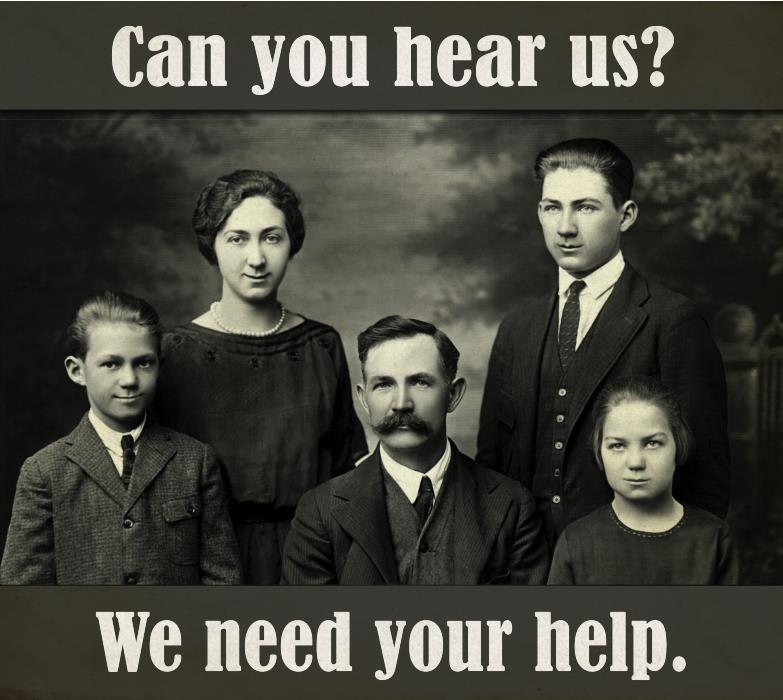
We are your family, your ancestors from the past. We want to be remembered and need your help. Our records and stories need to be found and preserved for future generations so they can learn from us which may strengthen and help them in their lives.
Richard Price has a gift for finding records and stories. He has developed this gift into a talent and business to help others find their ancestors all over the world. His group of associates have helped others find thousands of ancestors. Please give us a call for assistance.
Price Genealogy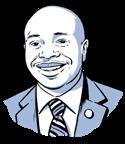
Cavalier Johnson is the first Black elected mayor of Milwaukee, Wisconsin. Located on the shore of Lake Michigan about 90 miles north of Chicago, “Brew City” is a Midwestern prototype, known for fish fry and cheese curds, German heritage and Black culture. The largest city in Wisconsin is also a political stronghold for the Democratic Party. That includes Johnson, who was a surrogate on the ground for President Joe Biden’s campaign in 2020 and firmly backs his reelection efforts this year. But for one weekend this summer, Johnson will also play host at the epicenter of the conservative universe, when the Republican National Convention rolls into town.
Hosting the event (which begins July 15) presents a unique challenge for Johnson, a husband and father who believes it's possible for political partisans to “disagree
without being disagreeable.” Not all Milwaukeeans agree; one group, the “Coalition to March on the RNC 2024,” is already planning protests. Johnson, however, is taking a different tack. When Republicans held a presidential primary debate in Milwaukee last August, he welcomed them with open arms, asking his city to do the same this time around.
IT IS NEVER OKAY FOR SOMEONE TO USE VIOLENCE AGAINST ANOTHER PERSON BECAUSE THEY HAVE A DISAGREEMENT WITH THEM, ESPECIALLY A POLITICAL DISAGREEMENT.
Pragmatically, the event will be a boon to the local hospitality and tourism sector. But what motivates Johnson is the principle. He hopes that hosting the convention in Milwaukee will provide residents with a platform to model healthy, productive civil discourse, something that is lacking in today’s hyperpoliticized environment. The Deseret News spoke with him about preparing his city for the convention and promoting healthy conversations.
WHY HAVE YOU MAINTAINED SUCH A WELCOMING APPROACH TO REPUBLICANS IN YOUR CITY?
Even though I’m a Democrat, I’m also a mayor. And as a mayor, I’ve got a responsibility to do the things that I laid out when I was running for this office. That includes growing the population in Milwaukee, growing our economy and creating good,
family-supporting jobs here. And this convention and other large-scale political, sports and entertainment events like this are a great opportunity to put the city on the map. And that’s why we were able to put partisanship aside, be gracious hosts and be in a position where we’re able to have the eyes and attention of the country and the world on Milwaukee.
WE’VE ALL SEEN THE PARTISAN DIVIDE INCREASING ACROSS THE COUNTRY. DO YOU SEE THAT AT THE LOCAL LEVEL AS WELL?
I believe that the vast majority of people in Milwaukee, in Wisconsin and across the United States are looking for people to be able to disagree but not be so disagreeable. Do I personally believe that we can do that? Yes. And I believe that the way that we do that is by listening and by understanding, but still looking for progress. Personally, I believe that the path to achieve that is center-left. But we can be gracious hosts. We can respectfully disagree. I think that’s a way for us to bring people together and still get great things accomplished.
HOW DO YOU QUANTIFY THE EFFECTS OF HOSTING A MAJOR POLITICAL EVENT — LIKE A DEBATE OR A POLITICAL CONVENTION — IN YOUR CITY?
Well, there was a ton of media exposure with the debate in August. There are people who travel from elsewhere in the country to attend those debates, and especially the first one to start a presidential election cycle. Those folks are eating at restaurants and staying at hotels. They’re putting money into the pockets of people who work in our tourism and hospitality sector here in the city of Milwaukee. But I remember the day of the debate. It was a triple-digit weather day — just really, really hot. But on the street, you could feel the energy. You could cut it with a knife, even with all the humidity. That sends the message that this place has a lot of love. That’s a good thing, whether you’re Democrat or Republican.
There’s roughly 50,000 people in the city
that cast ballots for Republicans. So this is also the single largest source of Republican votes in the state of Wisconsin. As mayor, I’ve got to understand what good can come from that level of exposure for the city and also recognize the fact that I’ve got those constituents who live in my city. Some people voiced discontent with the Republican Party and its platform, but were also able to benefit from having the debate here.
WHAT GOES INTO HOSTING A DEBATE? WHAT DID YOU LEARN THAT WILL HELP YOU DEAL WITH THE REPUBLICAN NATIONAL CONVENTION?
Security is a big part of it. We have worked closely with partners in law enforcement — the police department, Secret Service, fire departments — to make sure
I BELIEVE THAT THE VAST MAJORITY OF PEOPLE ACROSS THE UNITED STATES ARE LOOKING FOR PEOPLE TO BE ABLE TO DISAGREE BUT NOT BE SO DISAGREEABLE.
that we’re able to host a safe convention. I’ve been lobbying to increase the security grants. The $50 million that communities typically receive to host a convention is not enough. We’re asking for those additional dollars so that we have the manpower on the ground to make sure there’s a safe convention. I was alerted just a couple of days ago that Congress is seemingly moving forward with our request to up the security grant to $75 million.
HUGE EVENTS LIKE THIS OFTEN LEADS TO COUNTERPROTESTS AND SOMETIMES EVEN VIOLENCE. IN A TIME WHEN FORMAL POLLING SHOWS THAT AMERICANS INCREASINGLY THINK THAT IS A REASONABLE WAY TO EXPRESS
THEIR DISAGREEMENT, HOW DO YOU SEND A MESSAGE OF PEACEFUL DISAGREEMENT?
It is never OK for someone to use violence against another person because they have a disagreement with them, especially a political disagreement. The way that you fight that out is at the ballot box. You work to engage and to elect another candidate who falls in line with your view of the world, with your purview, and executes policies that fall in line with that. So it’s not OK to strike people physically or damage property over a political issue. My message is, look, we’re happy to have people here. We’re happy to be great hosts. You can disagree with people. The “disagreeable” part is if you commit physical or property damage to folks in our community. That will not be tolerated. And we’ll have the personnel on the ground to make sure that you're held accountable for your actions.
WHAT DO YOU WANT THE AVERAGE AMERICAN VOTER, LIVING IN A POLARIZED TIME, TO LEARN FROM MILWAUKEE?
We are a deep, deep blue city. That is widely known throughout the state of Wisconsin. At the same time, we also have the most votes, I believe, for Republicans of any community in the state. We are the economic center of Wisconsin. We’re the population center of Wisconsin. We’re the cultural center of Wisconsin. We’re the diversity center of Wisconsin, too, and that diversity means that we can also express diversity of thought. Now, Democrats tend to rule the day here, and I think that people in Milwaukee believe that the path to prosperity, the path to a better and just society is somewhere in the political middle. And I think that people in Milwaukee think that’s in the middle-left, center-left. So you see that play out in elections, when people cast their ballots here. But I want people to know that about the city. It's a big city. It's a city that is diverse. It's a city that we're working to grow. But it's a city for everyone to come to, for everyone to find their place.



